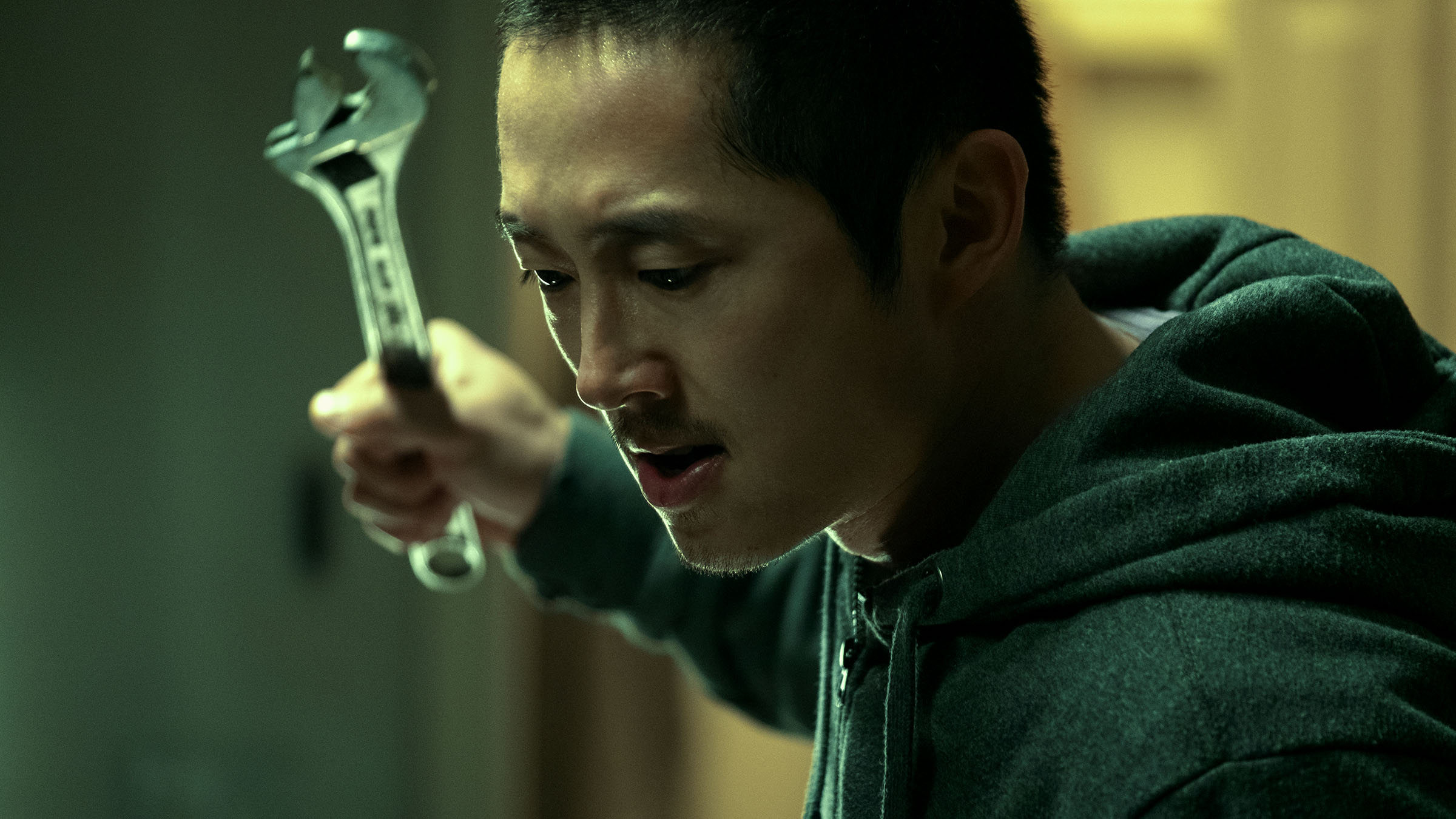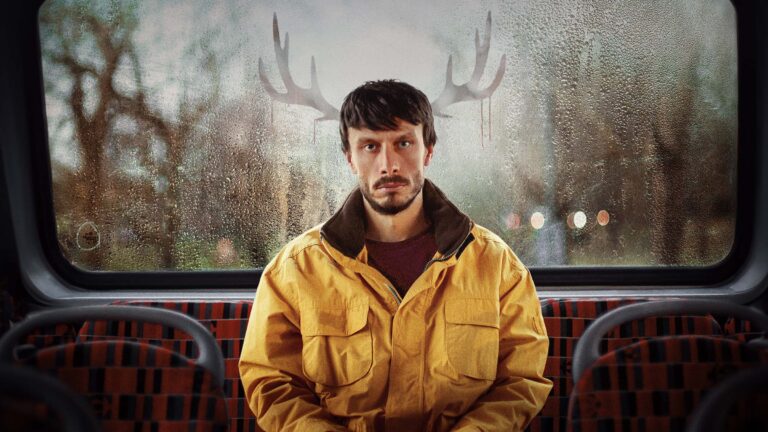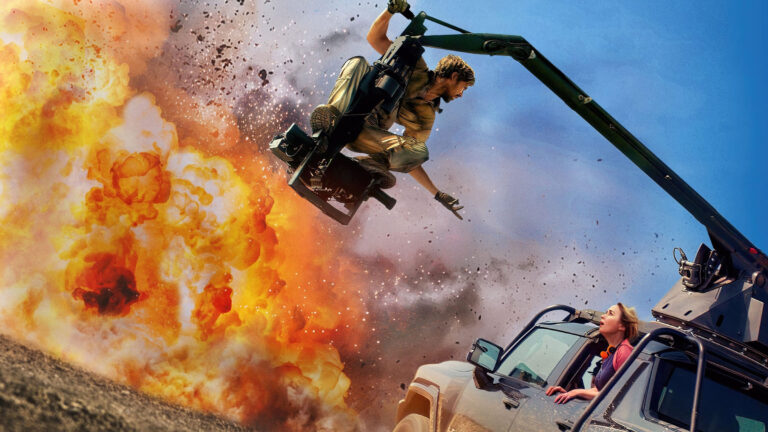The Emmy-nominated Beef editing team of Laura Zempel and Nat Fuller came into this project with plenty of experience crafting storylines featuring complicated characters and situations. Nat kicked off his career with another well-known Netflix property, Stranger Things, starting as an assistant before transitioning to full editorial duties on the Duffer Brothers supernatural juggernaut.
For Laura, her time in the editing suites of complex dramas began with assisting on Dexter, to ultimately cutting on HBO’s critically-acclaimed Euphoria.
Created by Korean director Lee Sung Jin (Sunny) for Netflix, Beef stars Steven Yeun and Ali Wong as Danny Cho and Amy Lau, two strangers whose involvement in a road rage incident escalates into a prolonged feud.
In our discussion with the Beef editing team, we talk about:
- Filling two gigs with one agent
- Nailing the Nineties needle drops
- Not taking sides in the edit
- Sound designing drug trips
- Taming the tension in post-production
Listen while you read…
Editing the Emmy-nominated show, Beef
Warning: this interview contains minor spoilers.
Matt Feury: What’s cool about this show is that it has such a simple and relatable premise, but it then goes places that none of us would ever want to relate to.
I thought we could start with the simple questions and nothing is more simple than how you got the job. Nat, why don’t you tell me about how you got this gig?
Nat Fuller: This job was brought to me by my wonderful agent, Laura Brokaw, who also happens to be Laura Zempel’s agent. It was just the luck of the draw. My agent brought this show to me and she thought I would be interested in it.
I read the scripts and right away I knew that it was something that I’d like to be part of, especially with the actors involved, and directors Sunny (director Lee Sung Jin) and Jake Schreier. It was a no-brainer for me to join.
MF: I see the agent connection here. Laura, how about you?
Laura Zempel, ACE: My agent, Laura Brokaw at Gersh brought it to me, but she told me that Harry Yoon, ACE was attached and that he would be doing the pilot.
I had worked with Harry before on Euphoria. He worked on season one with us. I loved working with Harry, so that was a huge draw for me. I read the scripts and then I talked to Harry about it. I asked him what drew him to it, because he had been in conversations for a long time.
He was originally supposed to do the full series, but the schedule pushed and they needed to bring someone on to take over his episodes. That was why the scripts came to me. I remember talking to Harry about it, and he said, “You would be perfect for this. You should definitely do it.”
Harry was a big reason that I was drawn to the project. I love working with him and I love his taste. Then I met with Sunny and that went really well. I loved the scripts. I loved the needle drops that were written into the episodes. I thought that element was so fun. I was on board right away.
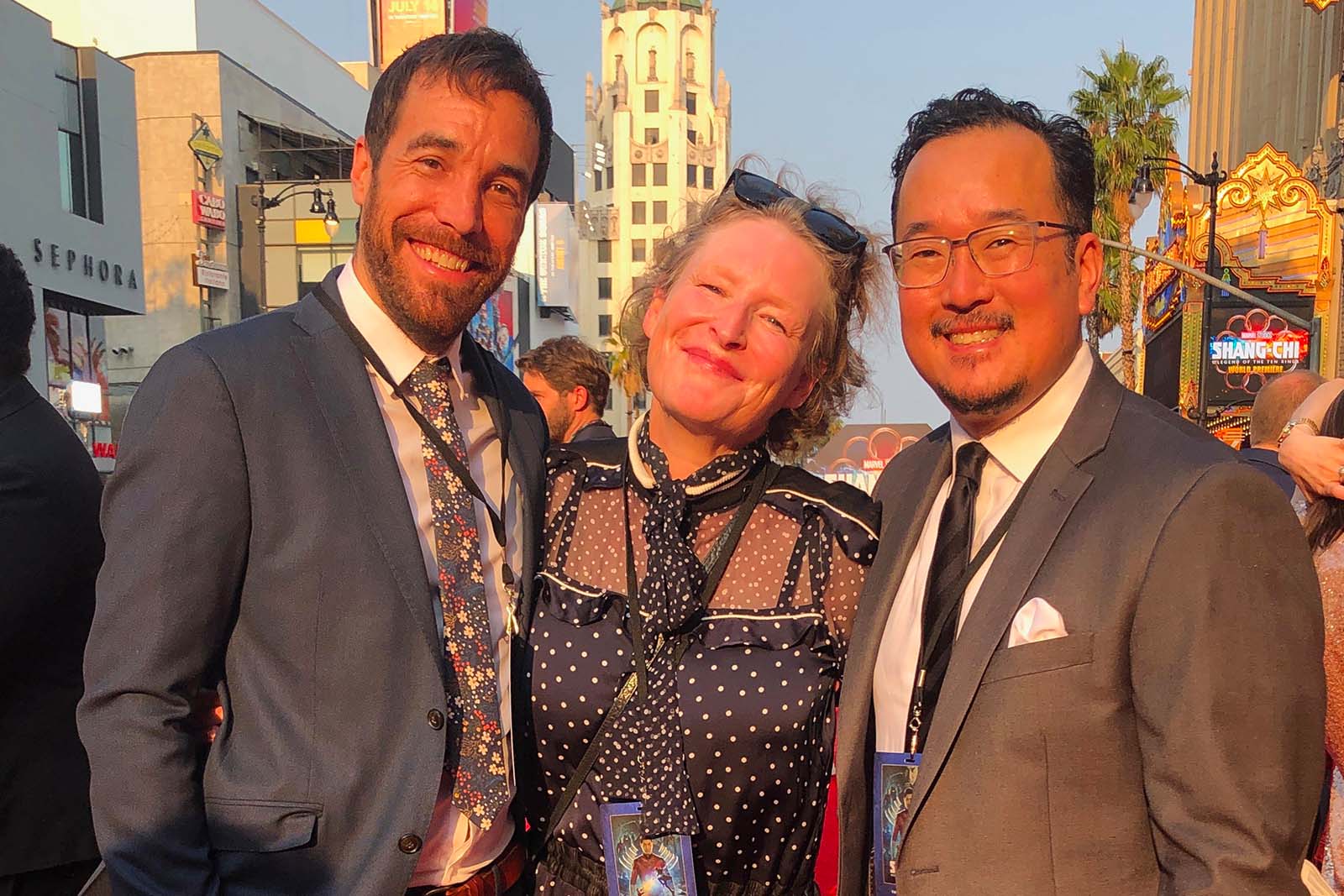
MF: I’m happy to hear that your agent was able to make this happen for each of you. What is it about you two that made Laura Brokaw think, “This series is going to be perfect for Nat and Laura?”
Laura Zempel: I think Laura Brokaw knows that I love character pieces. I love really in-depth, rich, complex characters and this show has that in spades. I love that, in addition to mixing comedy with drama. I’ve never asked her, but I assume that’s why she put me up for Beef.
Nat Fuller: I would like to carbon-copy that answer. I think the same thing. I’ve talked to Laura extensively about the projects I’m interested in, and I always heavily favor character pieces, character drama, things that get to explore the good and the bad sides of human nature. Having that in mind was something that she recognized.
The scene of the crime. The first one, at least.
Same answer for the comedy with some drama. I like things that are not just one genre. I like having laughs, drama, comedy, action, all together. That’s something I think she saw in the scripts and thought would be a good fit. I’m very happy that she recognized that.
MF: Tell me about the interview process. Obviously, your agent thought this was going to be a good thing for you. But at some point, you have to interview. What went on in that discussion? How was the show pitched to you? How do you pitch yourself in a situation like that?
Laura Zempel: That’s a tough one. I always try to treat interviews like a conversation. In an interview, I’m really figuring out if the show that I’m trying to make is the same show that the creator is trying to make. I know if that’s not aligned, then it probably won’t be a good fit.
In an interview, I’m really figuring out if the show that I’m trying to make is the same show that the creator is trying to make.
I try to go into every interview very open, trying to discover what story they’re trying to tell. I’m also seeing if their vision is what I got out of the script.
The meeting for Beef was during the pandemic. Sunny and I met over Zoom. At that point, I think I had only read the first three scripts. I just wanted to talk to him about music, because the needle drops were written in.
Amy (played by Ali Wong) also really drew me in, initially. She had this inner struggle where everything seemed so perfect on the outside. So, we talked a lot about Amy and what she’s going through, because Danny’s (played by Steven Yeun) arc is a little more relatable and understandable.
Shooting locations: Amy’s house speaks of luxury and privilege…
…while Danny’s apartment speaks to his position in the pecking order.
It was basically just me asking a lot of questions about Amy and what is wrong with her and why. Then, of course, I’m trying to get information out of Sunny like, “Where is this going to go? What’s going to happen with them?”
He told me a few things, but at that point, they were still revising drafts of the episode. It was a little vague. But there was enough there that, after meeting with Sunny, I was very excited to take the next step.
Nat Fuller: My interview process with Sunny was similar. I approached it as if it were a conversation. Sunny asked me, after I had read the scripts, “What does this remind you of?” I think he was making sure that our story views were going to align. The one film that I immediately equated with it was Parasite, which I had recently seen many times. I just love it so much.
I think he was making sure that our story views were going to align.
I talked to him about why I thought Parasite was a similar story, with the class dichotomy about the rich and the poor and people in different positions, and also how those two types of worlds can collide. Then he told me how he wanted Beef to be very Sopranos-esque, which I thought was surprising, but after he explained it to me, it made a lot of sense.
So, I immediately started watching The Sopranos again. We just talked about different scenes. He asked me if I’d ever been to a Korean church, which I had not. I actually went and visited one, just to get a feel of what it was like.
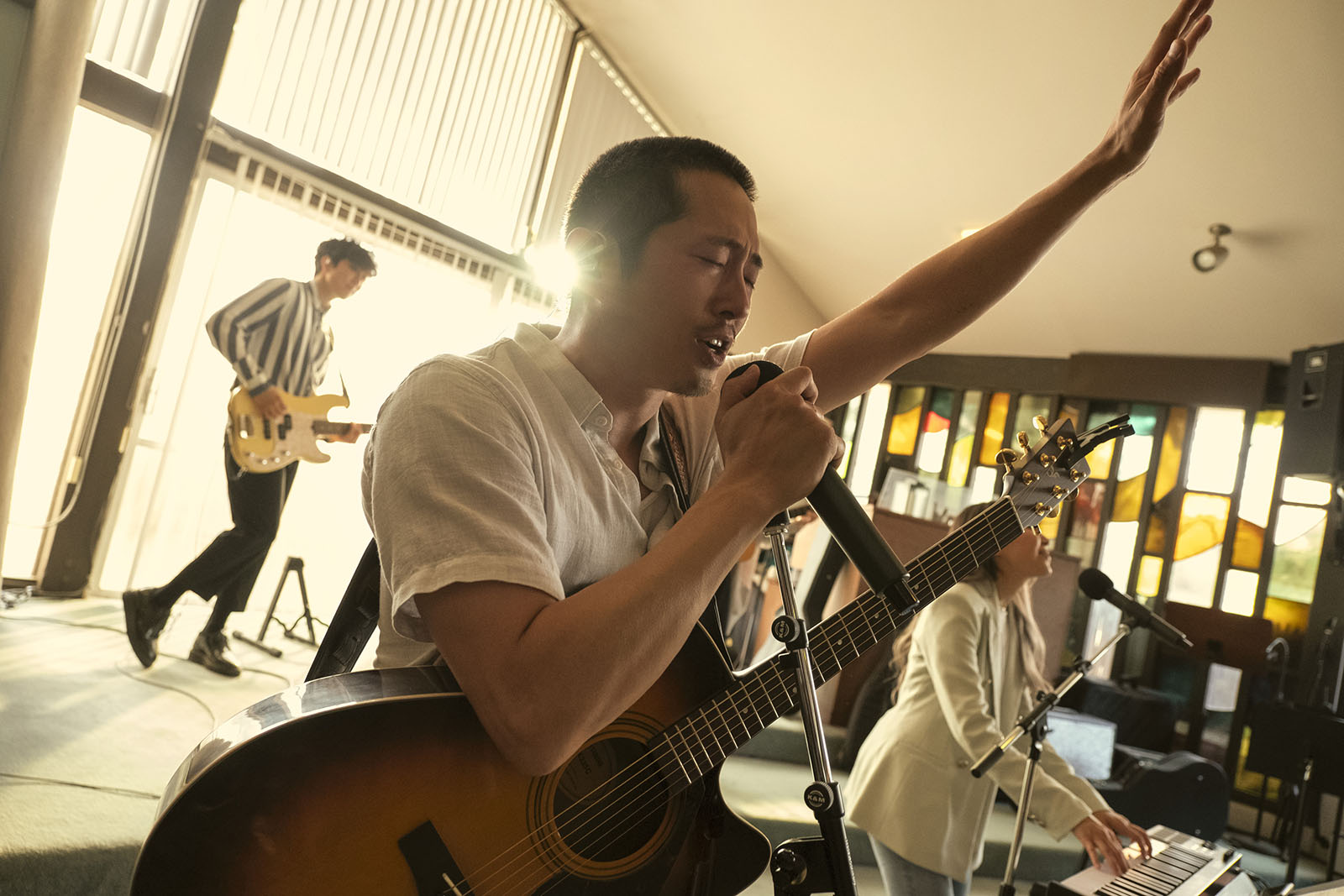
We also talked about the intricacies of the characters. I talked to him about what I like in these types of shows, delving into character work. Getting under the hood and looking at flawed characters was something that I was very interested in.
A lot of the conversation was us talking about what shows we like, what movies we like, and what we were interested in bringing to the finished product.
MF: Before we move on from the interview process with Sunny, I read that, in pitching the show, he actually had a PowerPoint deck that he used to explain his concepts and his ideas for the show. Did either of you get to see that now-infamous PowerPoint deck?
Laura Zempel: I did not get to see it, but I heard a lot about it. It was timed to music. He had all of the music timed out with the PowerPoint, that’s what I heard.
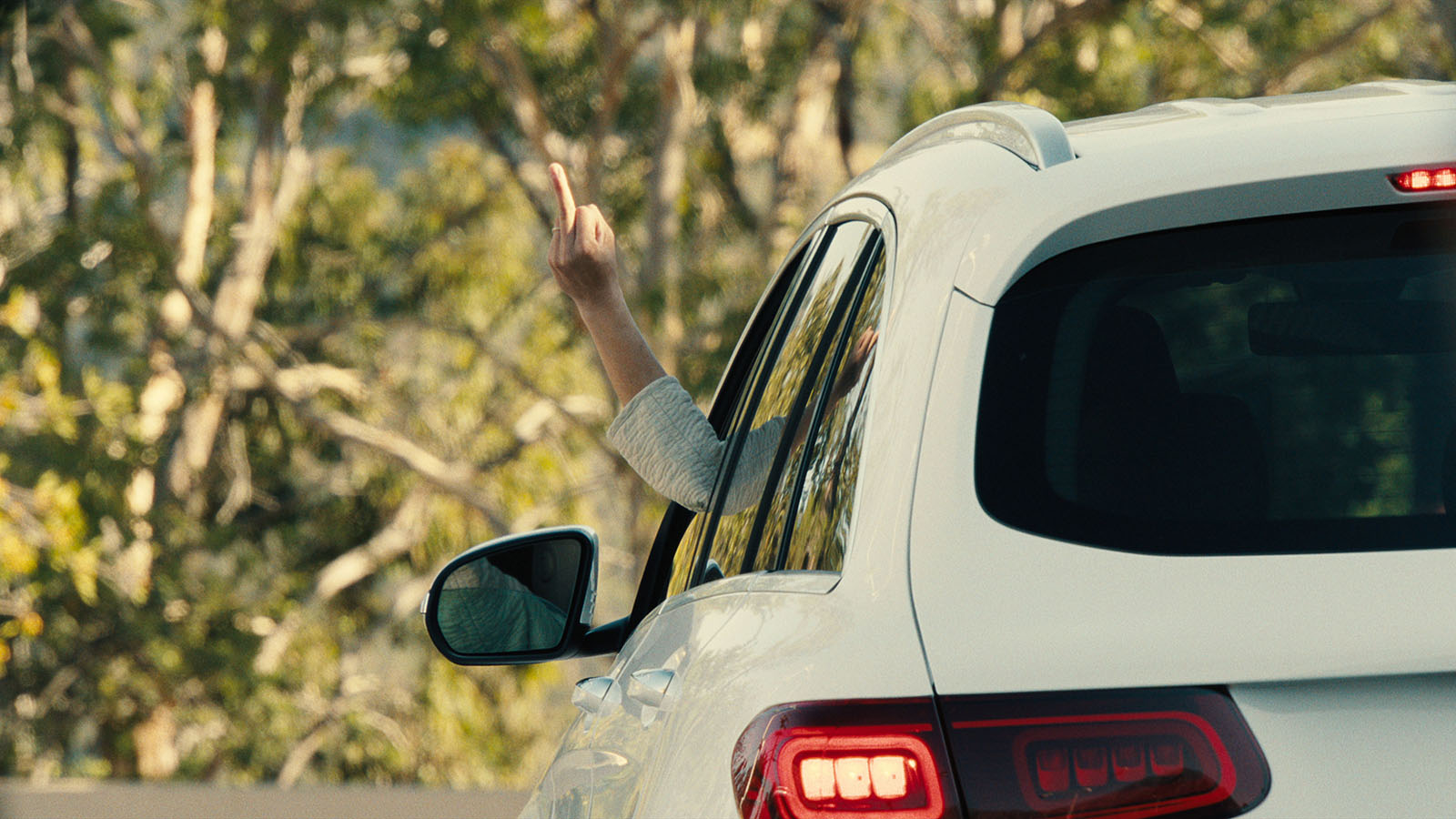
MF: Have either of you ever experienced anything like that before, when talking to a showrunner?
Laura Zempel: No. I sometimes get pitch decks that are a photobook of just images or whatnot, but I’ve never seen a PowerPoint.
MF: As far as collaborating, were you working together? Were you isolated? How was the post-production process for Beef?
Laura Zempel: It was a little bit of everything. They block shot the episodes, so we were all getting dailies at different times. I believe Harry Yoon started first, and then Nat started a week or two after Harry. I started a week or two after Nat, and Jordan Kim, our other editor, started after me.
I find it very strange doing television dailies from home when I haven’t met the other editors or seen their cuts.
We were all doing dailies from home. All of the assistants worked from home. In that first part of the process, it was really strange. I find it very strange doing television dailies from home when I haven’t met the other editors or seen their cuts, if they’re gracious enough to share.
I called Nat and introduced myself and said, “Hey, I’m Laura. I’m cutting the show. How’s it going? Tell me everything.” He let me watch a scene or two, which was great. He had already been in conversation with Harry before I started. Eventually, we started doing 45-minute Zooms on Fridays, just with our post-production team.
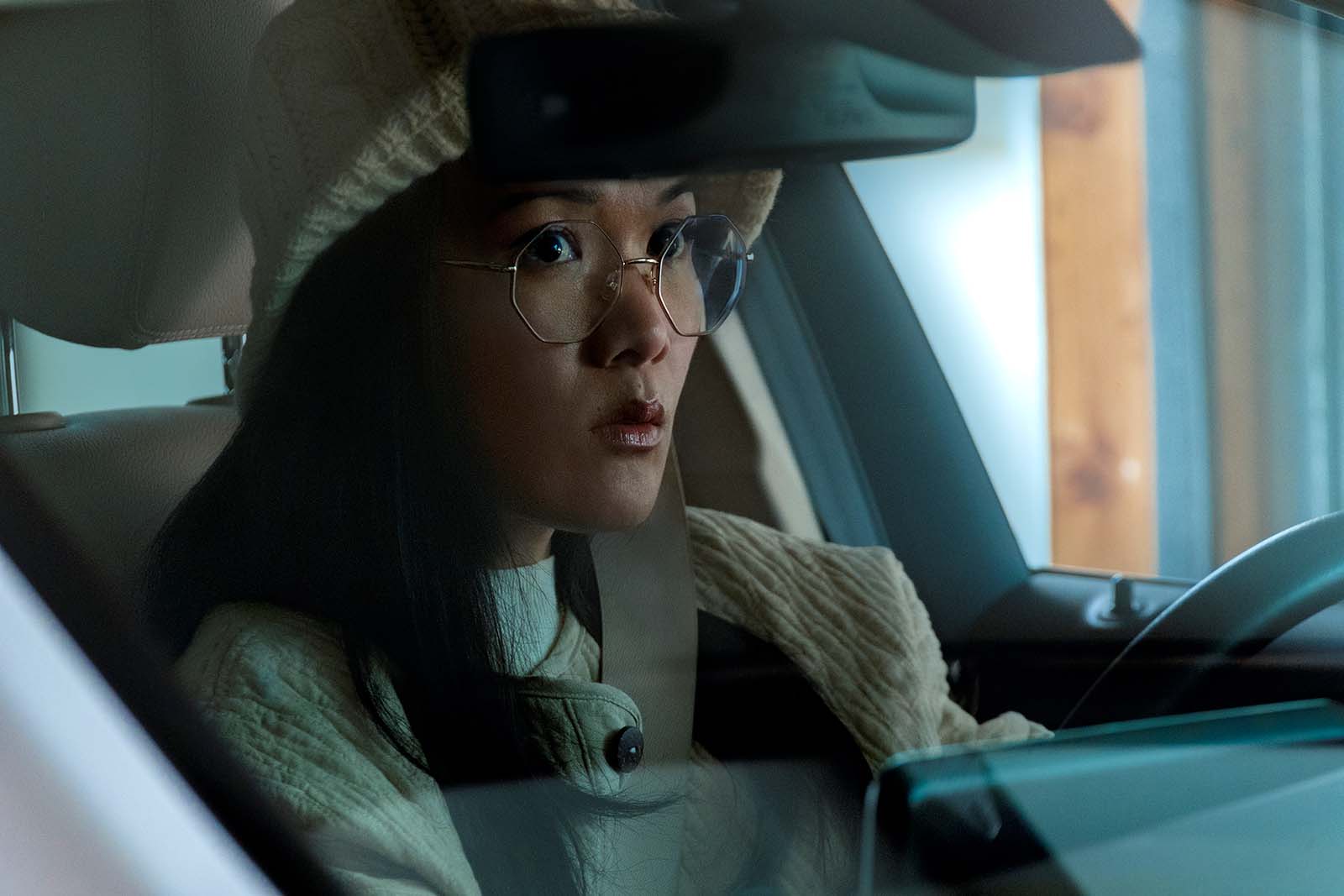
We would all hop on Zoom and get to know each other and just chat. “How’re your episodes going? What is everyone doing this weekend?” It was a really nice way to bond while we weren’t in the office. Once everyone had been on the show for a while, our post team met up for Korean barbecue, and then we all went and did karaoke afterwards, which was great. That’s a very intimidating way to meet your coworkers for the first time! But I feel like that really bonded us.
When production was done, we moved into offices in Burbank. We were all working together for a little while, but COVID was starting to surge, so we decided to keep as few people in the office as possible.
Nat, Jordan, and I had offices, and Nat and I were pretty much there all the time. Jordan, I think, was doing director’s cuts, and then he was there as-needed. Then, unfortunately, he had to leave. He had another show coming up. So, Nat and I were in the office most of the time, together. I think that’s why he and I really bonded, because we were the only two left on the island.
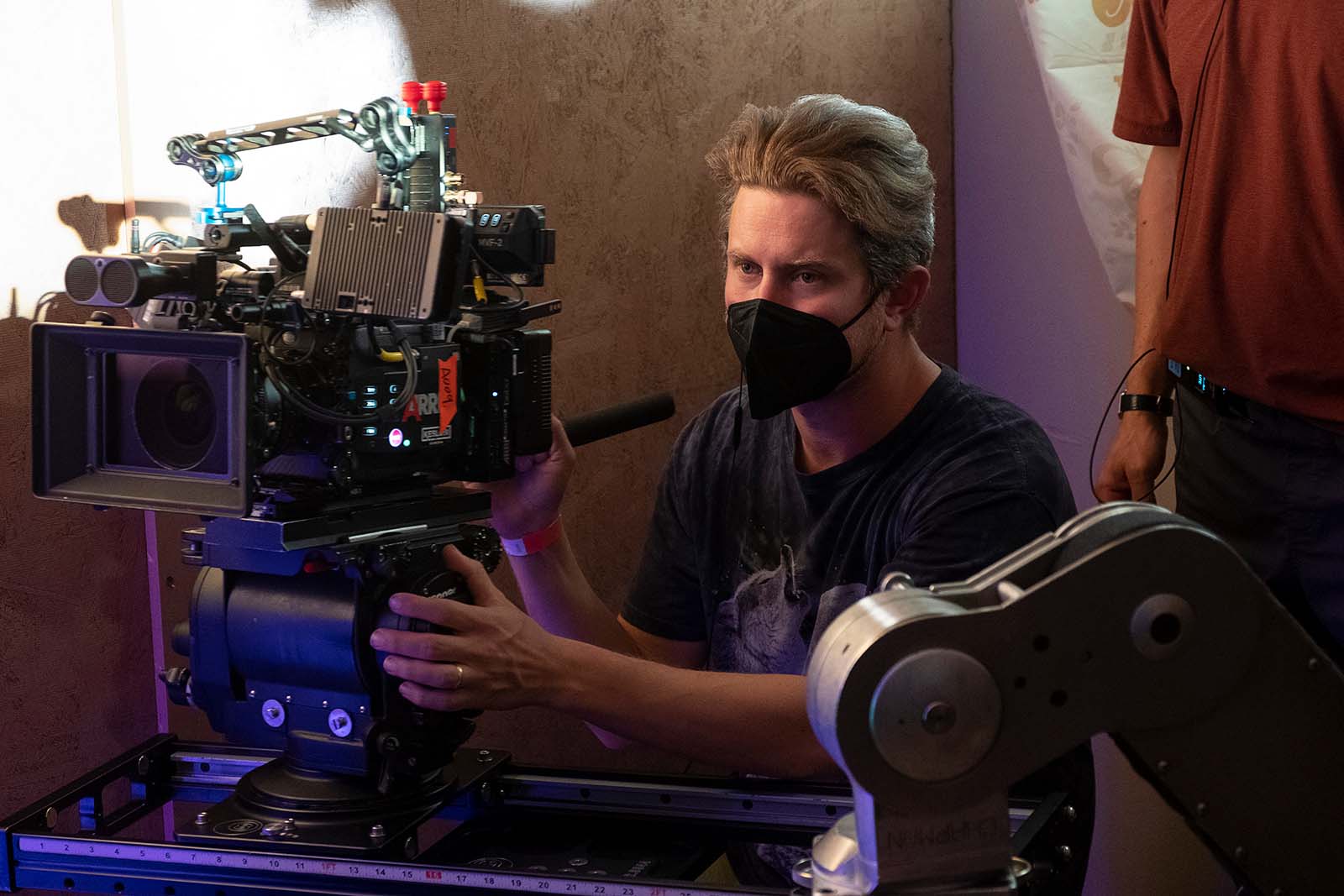
We’d go into each other’s rooms to check in and show each other scenes. “What are you doing with this scene? I need help. Can you look at this? Is this good?” Then, just debriefing at the end of the day. It was so nice being in the office. I much, much prefer being in-office on a show.
Nat Fuller: We were basically neighbors, so we could hear each other’s scenes most of the time. I could hear what was going on over there. We would definitely check in with each other.
We wouldn’t know this from Sunny or Jake, but there were many times where I would watch one of Laura’s scenes and say, “Oh, that line in my episode means a little something different now that I’ve seen hers.” Then I would go back to my edit, which was, say, episode three, and it would set up something for episode four, which was Laura’s episode.
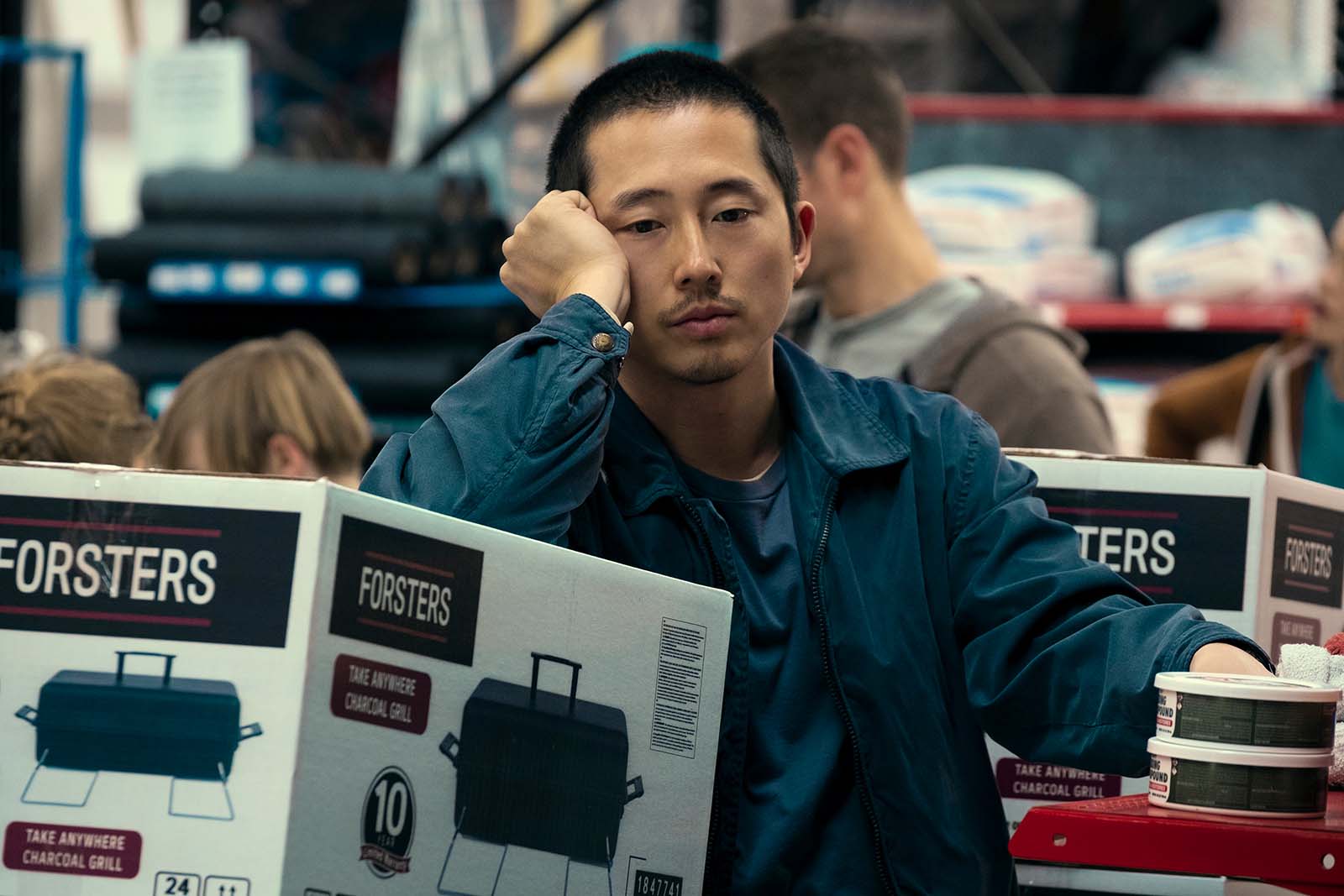
We can bounce each other’s ideas and have an idea of where we’re coming from and where we’re going to. We were constantly checking in with each other and making sure that the storyline as a whole was cohesive.
Even though we were working in separate zones at certain times, there was always a check-in period where we would understand the state of one episode versus another, so that there was a very nice, cohesive through line from episod one to episode ten.
MF: I want to ask you more about that process, but before I forget… So, karaoke? What did you sing?
Laura Zempel: We sang a lot.
Nat Fuller: Didn’t we sing? If I recall correctly, I always like to do a bit of Roy Orbison. I probably butchered that.
But we did collectively start to hit our needle drops from the show, which was fun. We preemptively did Hoobastank. We did the Incubus song Drive. We went through our 90’s vibe and got in the zone there, which was a lot of fun.
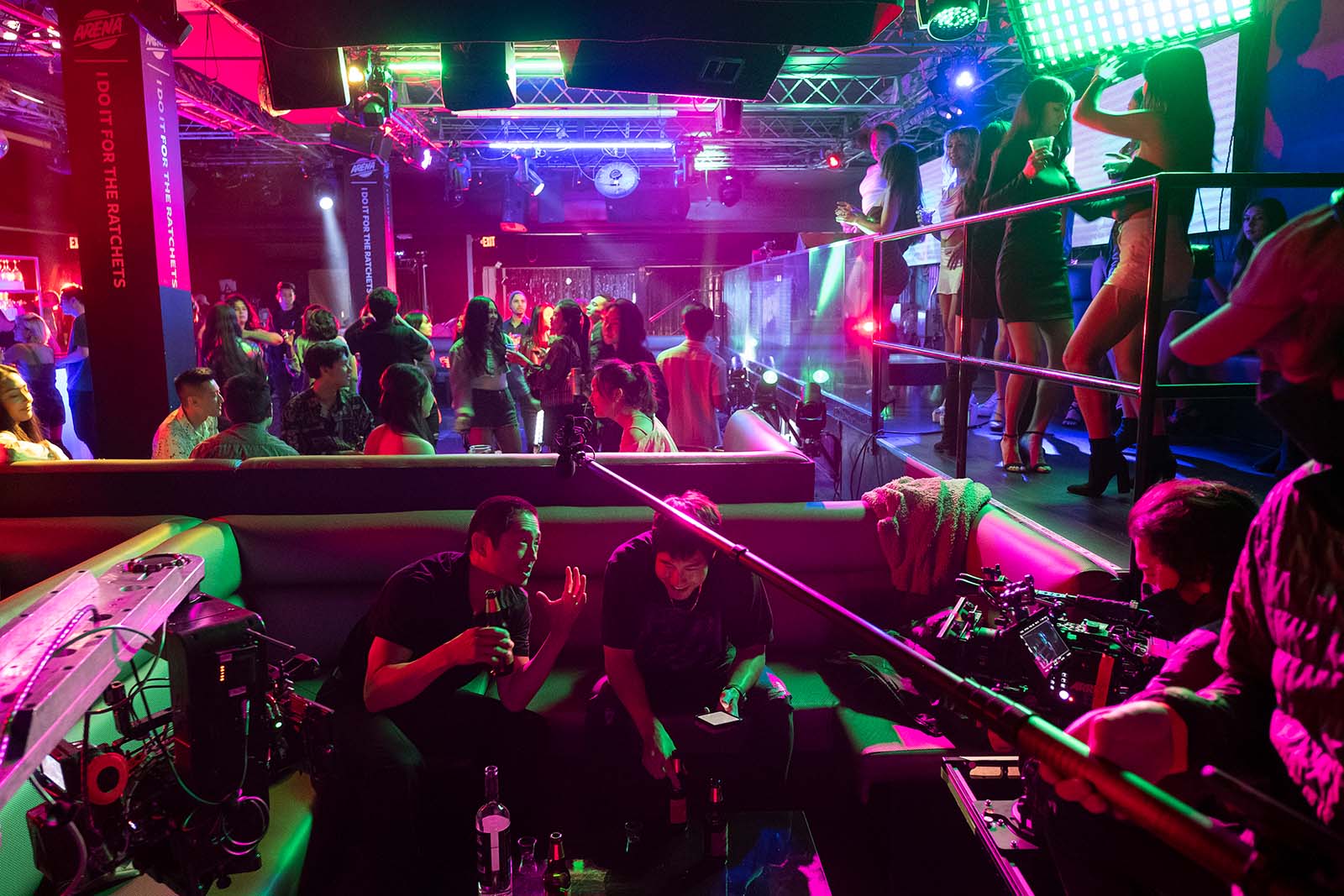
Laura Zempel: Definitely. I was very nervous because I wanted to make a good impression. I didn’t know how serious our karaoke group was going to be. I did Alanis Morissette You Ought to Know. I felt like it fit the 90s vibe.
We have an amazing video that I will not be sharing of Harry Yoon singing Hoobastank’s The Reason, which is gold.
MF: We’ve got to talk later.
I feel like I have no choice but to jump way ahead and get right to the needle drops, since we keep bringing them up.
The needle drops are so 90s. Collective Soul, Limp Bizkit, Hoobastank, the Offspring, System of a Down. How did you discover those tracks and why 90s?
Laura Zempel: I wish Sunny were here to answer that, because it is all 100% Sunny.
Every one of those needle drops is written into the script. I think the only one that changed was Hoobastank in the pilot. It was originally supposed to be Smashing Pumpkins, but Tiffany Anders, our music supervisor, sent a batch of alternates and Jake Schreier, our producing director, who never smiles, heard Hoobastank, and he smiled. So it had to be Hoobastank.
The music was definitely born from Sunny. I remember asking about it, because of what you’re saying. “When does this show take place? Why is everyone listening to this?” It is a little confusing and I wanted to understand the rules of the show as I was building and placing music within my episodes.
I remember talking to Harry about it. Harry said, “We’re not sure. Play with it, see what happens.” It all started a little bit looser and then tightened up as we discovered it.
The show definitely takes place in modern day. Sunny grew up with that music and I think now, as a showrunner, he is harkening back to the music that he loved and grew up with. I think a lot of showrunners around his age are starting to do the same.
That’s why I think 90s music is becoming a little more popular in TV shows, because the creators of these shows grew up with it. This is what we’re harkening back to, which I find very interesting.
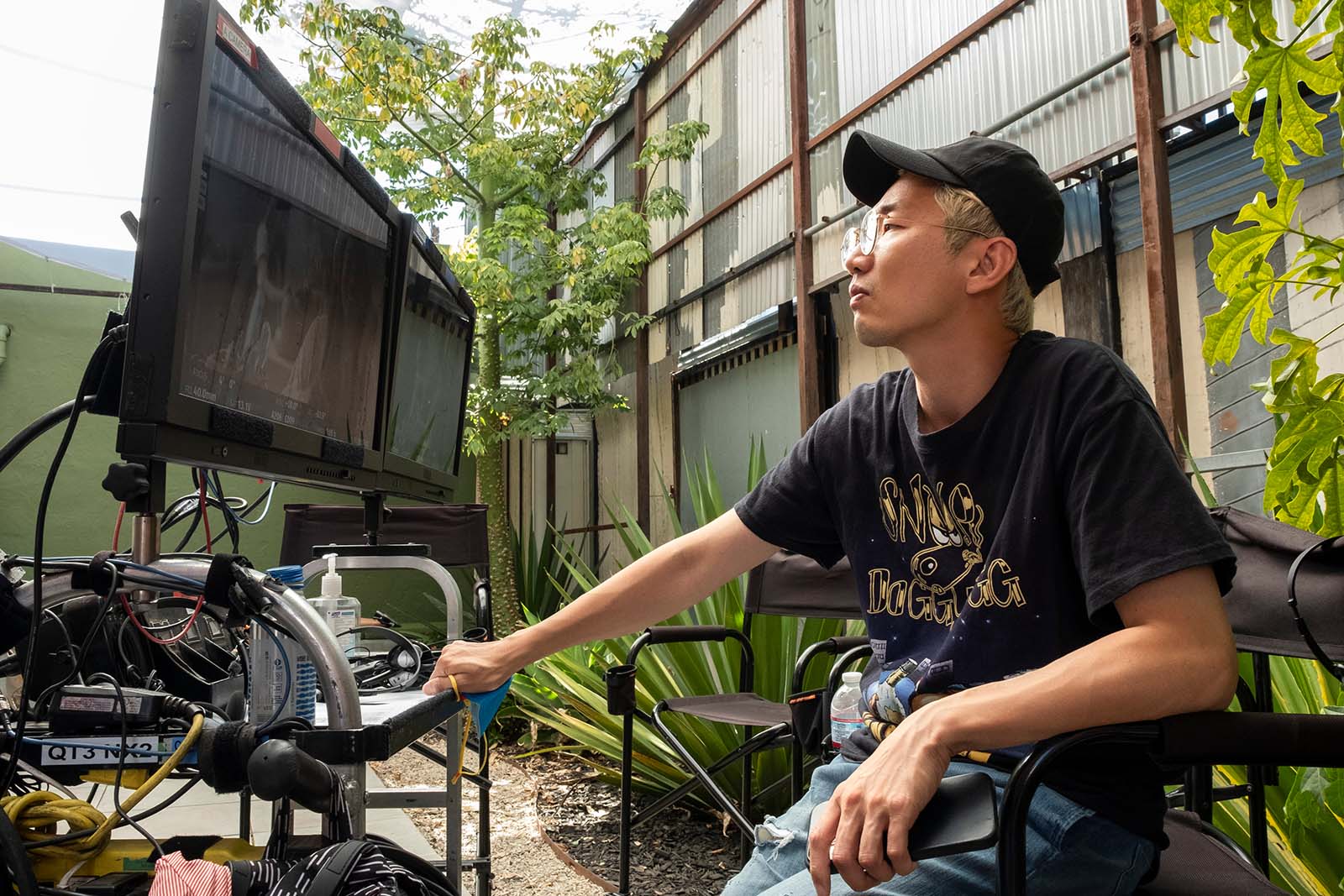
To Netflix’s credit, they loved the needle drops at the end and they encouraged us to do more. So, we came up with the gag that Amy’s SUV is stuck on this SiriusXM 90’s radio, and she’s just driving around listening to O-Town and Master P, or whatever is on in her car later.
It was just so much fun. It really opened up this whole other world of comedy. It gave the show a distinct texture that I think sets it apart.
Nat Fuller: I talked to Sunny a little bit about it as well, just to get an idea of what it was. The way he described the music in Beef was really good. He described them as the songs that you cringe to, but you also secretly enjoy. I think he bottled that up really well. He’d say, “I love this song, but nobody should know that I love this song.” He had a lot of fun with that.
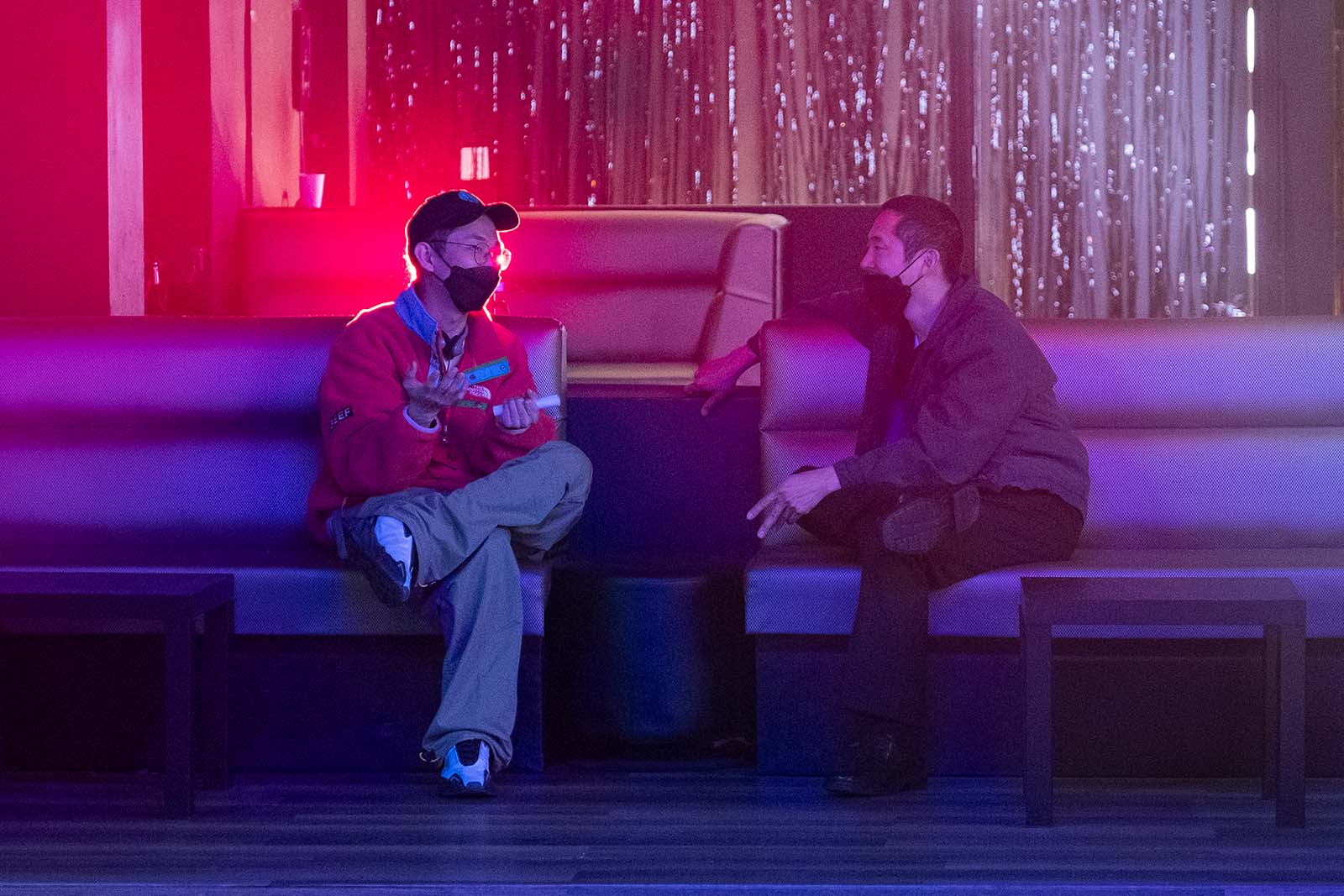
Sunny also knew that was the music that Amy and Danny listened to when they were younger. Altogether, it was really fun to listen to those songs, because they are what I listened to growing up too. When I heard Collective Soul in there, I thought it was so cool. We tried playing Papa Roach, we tried all these different songs. That brought some memories back for me as well.
Laura Zempel: The designed part of the needle drops, which I didn’t consider until Jake explained it to me, was that they start out ‘cringe’.
They start ‘cringe’ and are laughable. Then, as the show becomes more and more serious towards the episodes, the needle drops get more serious. They progress from comic cringe to something deeper and more meaningful.
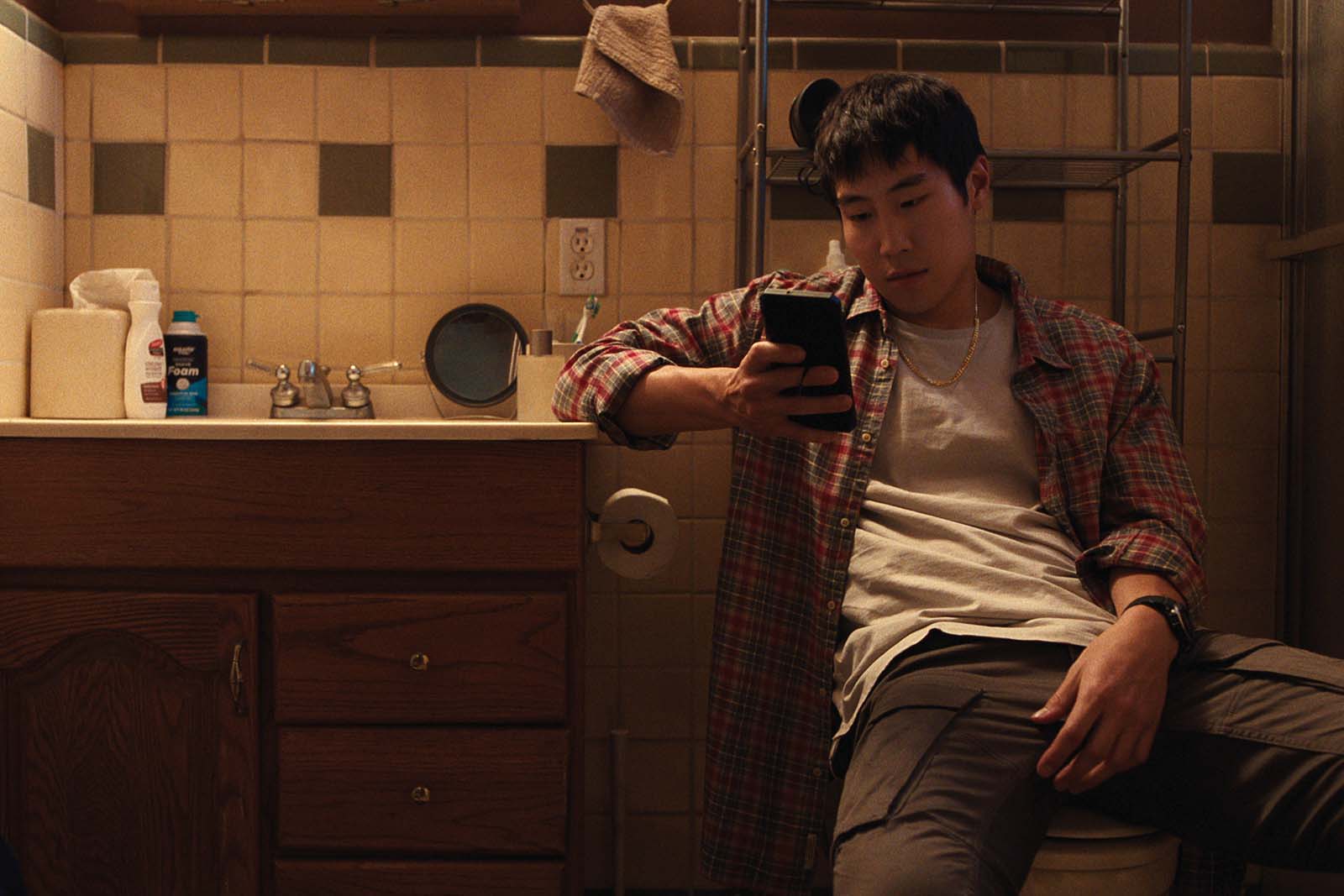
Hopefully that echoes what the characters are feeling, and what the storylines are building up to as well. It’s very consciously designed that way.
MF: Getting back to how the show is shot and edited, I was not expecting you to say, “I only got the first three scripts and we were block shooting.”
Does not having a clear picture of where the show is going make editing more challenging? As you were progressing through the series, how did you make sure that everything you did beforehand still made sense?
Laura Zempel: When I interviewed, I only got the first three scripts. When I got hired, I think I got the first six. So I knew enough to get started. I can’t remember how the block shooting started.
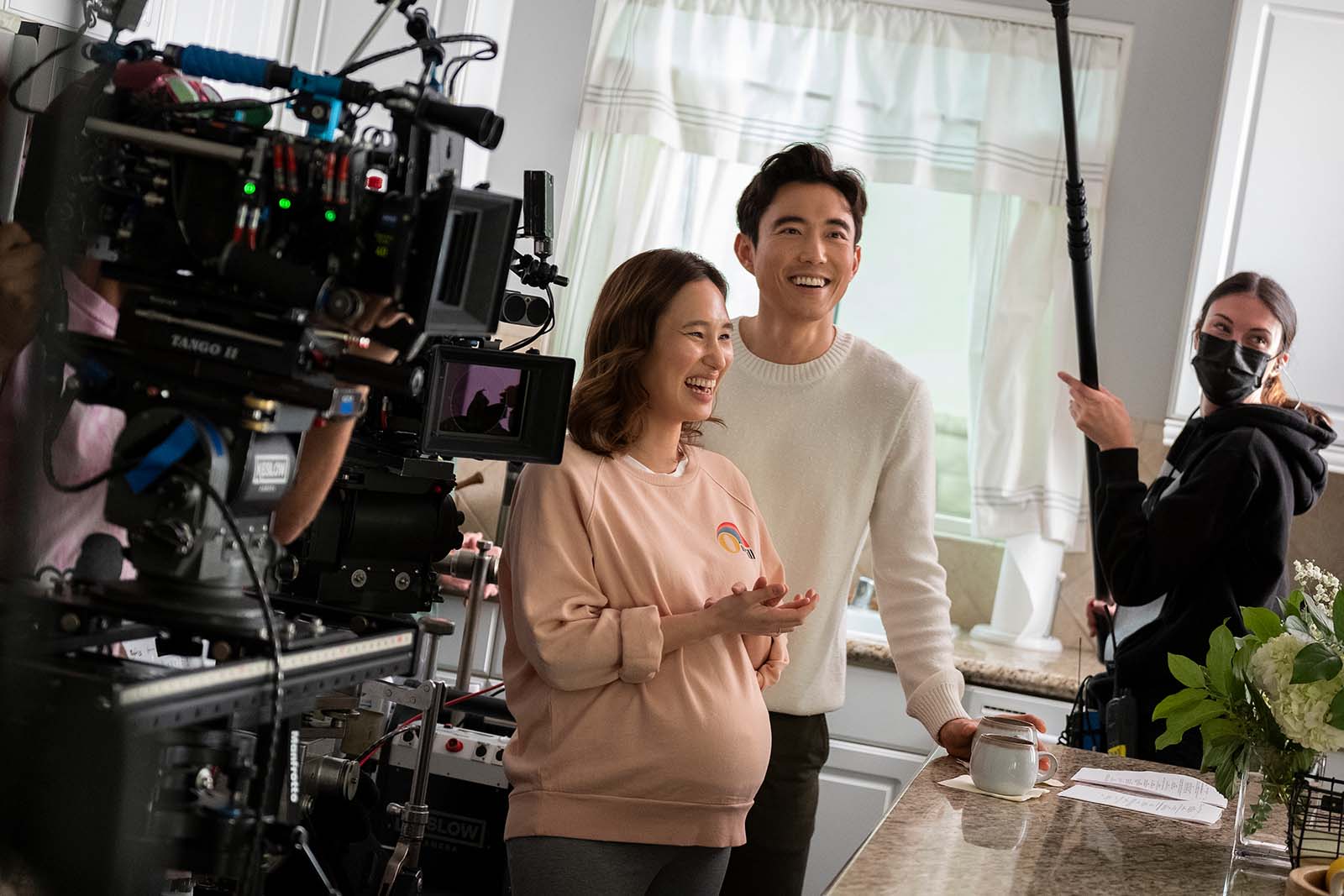
There were times where they were shooting the majority of the first episode, and then they’d add on something from the later episodes. By the time they were shooting episode ten, it was only episode ten. Sunny, our showrunner, directed that episode. That’s the one episode he directed.
The other two directors were Hikari and Jake Schreier. They were cross-boarding a lot. It was a little strange not knowing where the show was going to go, with Netflix releasing all the episodes at once.
Originally, I was not supposed to shepherd episode ten. I was supposed to do episode nine. But things got shifted around, and our post producer called me and said, “Are you cool doing the finale?” I asked, “What happens in it?” And he said, “ I don’t know, but it starts with two crows talking.” I just thought, “I want to do that episode! Yes.”
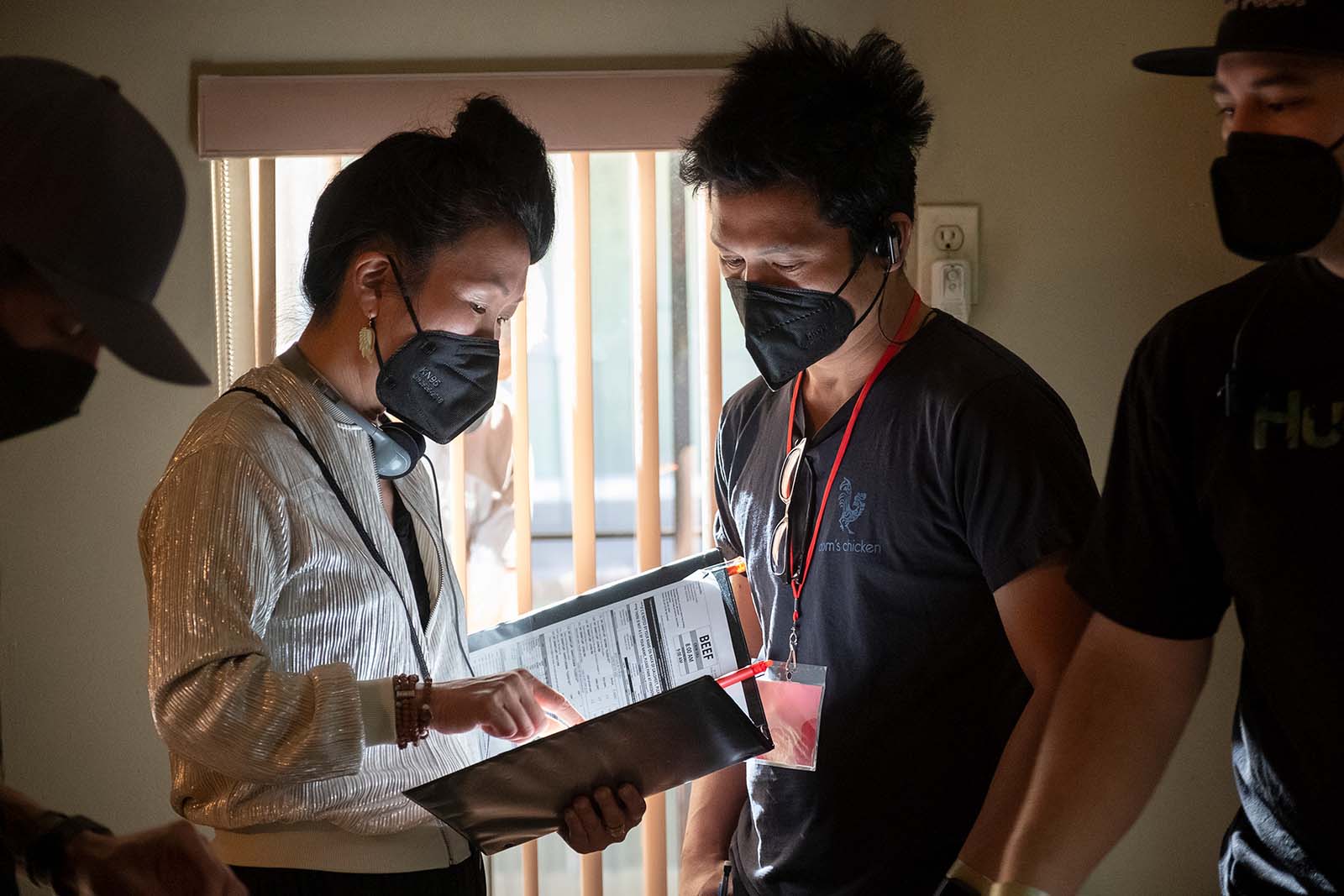
I think it’s about putting trust in the showrunner. The scripts were pretty solid, so I had enough to get going. It’s like what Nat was saying earlier, we were able to watch each other’s episodes.
We also didn’t have to lock them all right away, which was really nice. We were able to go back to previous episodes once we knew where things were going. If there were inconsistencies, we could adjust for them.
MF: For a show like this, knowing when to play up the comedy seems like something you have to constantly be discussing with the showrunners and keeping an eye on. How challenging is that for a show like Beef, where it’s certainly very funny, but sometimes the comedy comes from situations like Danny deciding not to kill himself and he’s trying to put out his hibachi grills? You have to be delicate with that stuff.
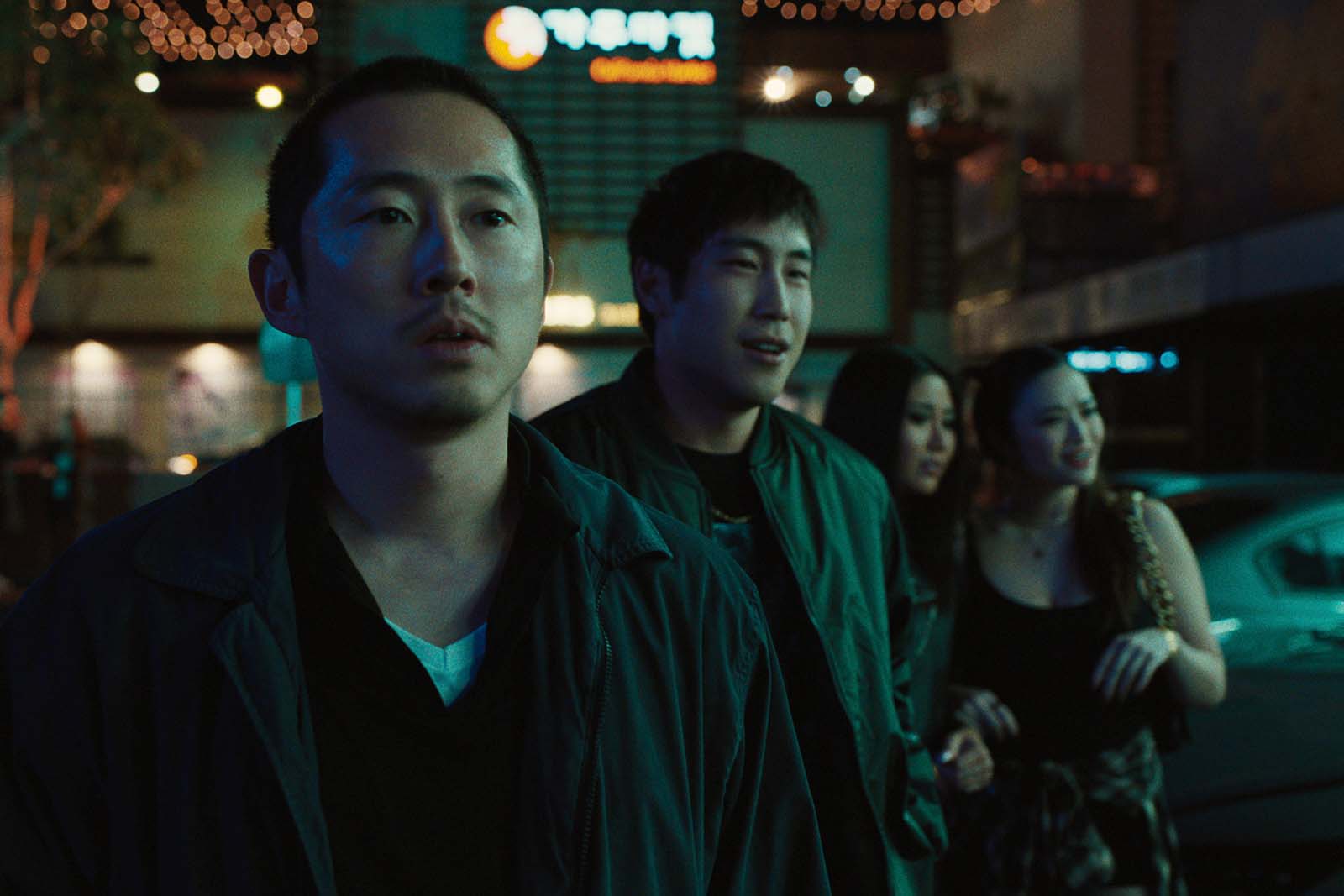
Nat Fuller: Definitely. I agree that there’s a little bit of a delicate hand going on there. I also think that the way this show was written, the slow burn of dramatic moments, lends itself to the progressive build-up where we start to get into more serious territory.
Episode one has more comedy. Episode two is a comedy. Then, when you get into episodes three, four, and five, you have these serious moments. In episode three, Amy is talking to George and Danny is crying in church. You’re introduced to these moments where you think, “Wow, there’s more going on here than just a silly road-rage beef. These characters have baggage that we are starting to see.”
Sunny and Jake built those moments into the show, and the audience eventually gets accustomed to it. It’s built into the experience. You say, “I can laugh here, but I also have to be ready for moments like the one in the church. I felt something there that I wasn’t quite expecting.”
Once that’s introduced, you can start positioning those moments to be more up front as the series goes on. When you get to episode seven, eight, or nine, the audience thinks, “Okay, I can laugh, but I am also ready for these moments of heavy drama.”
MF: You have these two characters and it’s almost impossible not to somehow side with one or the other. Did you want the audience to feel one way versus the other? Or did you have to be careful, so that they don’t?
Laura Zempel: That’s such a good question. I was hoping that the audience would be able to relate to both of them, and maybe not choose sides. It never really occurred to me. I was just focused on making sure that both of them came across as clearly as possible. I wasn’t trying to weigh one against the other.
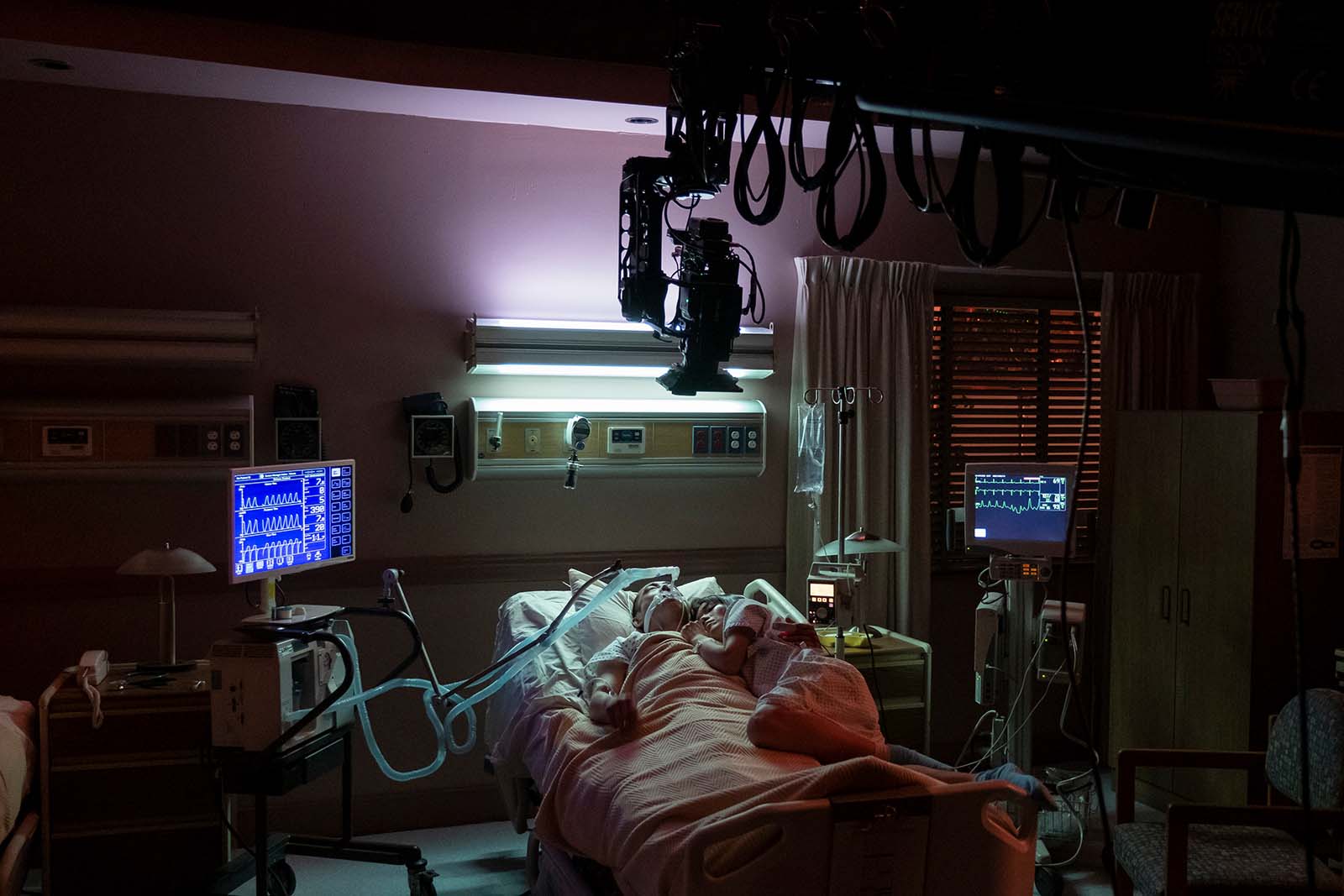
It’s funny, though. The pilot episode was originally written to be Danny’s story all the way through. You meet Danny, you go with him through the hibachi scene. Then he finds the receipt in the bag, he looks up the license plate number, and he has the flashback to Amy’s car going into the garage.
Then you reveal that it was Ali Wong behind the wheel, and we follow her whole story linearly. That was how it was written. That was how it was originally put together by Harry.
Then, we wanted to experiment. We wanted to give them both equal weight and see if we could draw parallels between the two of them and their journeys as they go through their day after the incident.
So, by cross-cutting the episode, we found that it actually gave them both equal weight. Danny’s story is pretty easy to understand. It translates a little bit better, whereas Amy’s story is so interior. It’s a little more complex.
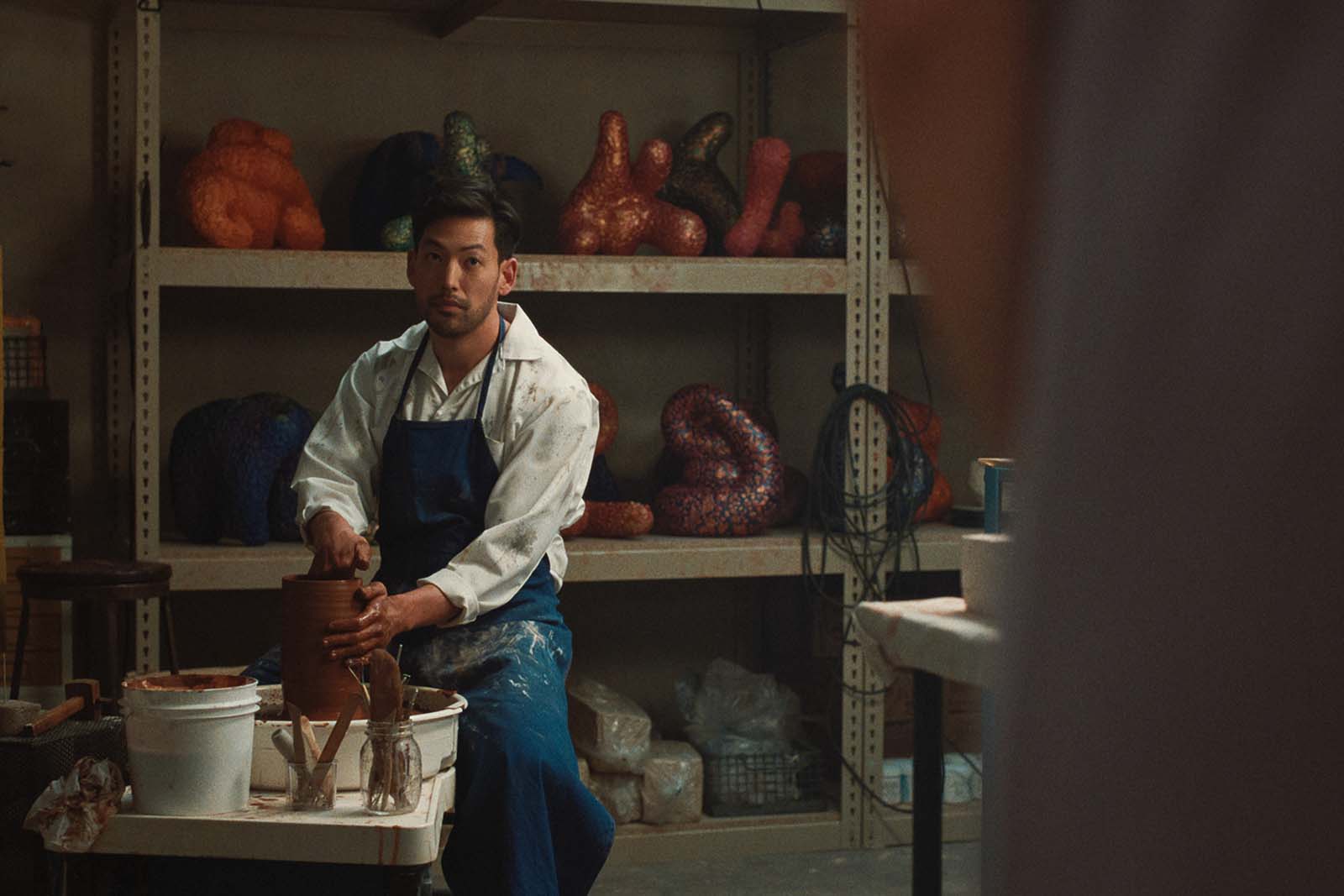
It was really challenging to make sure that was coming across to the viewer. We had to make sure that everyone understood what was wrong with her, because her life does look so perfect.
Film and video are visual mediums, so how do you get this across? We found that by cross-cutting Danny at work with Amy at work, Danny with his brother, Amy with her family, we could see the pressures that were building on both of them. Those scenes played off of each other and we hopefully drew more sympathy for them as individuals by pairing them together.
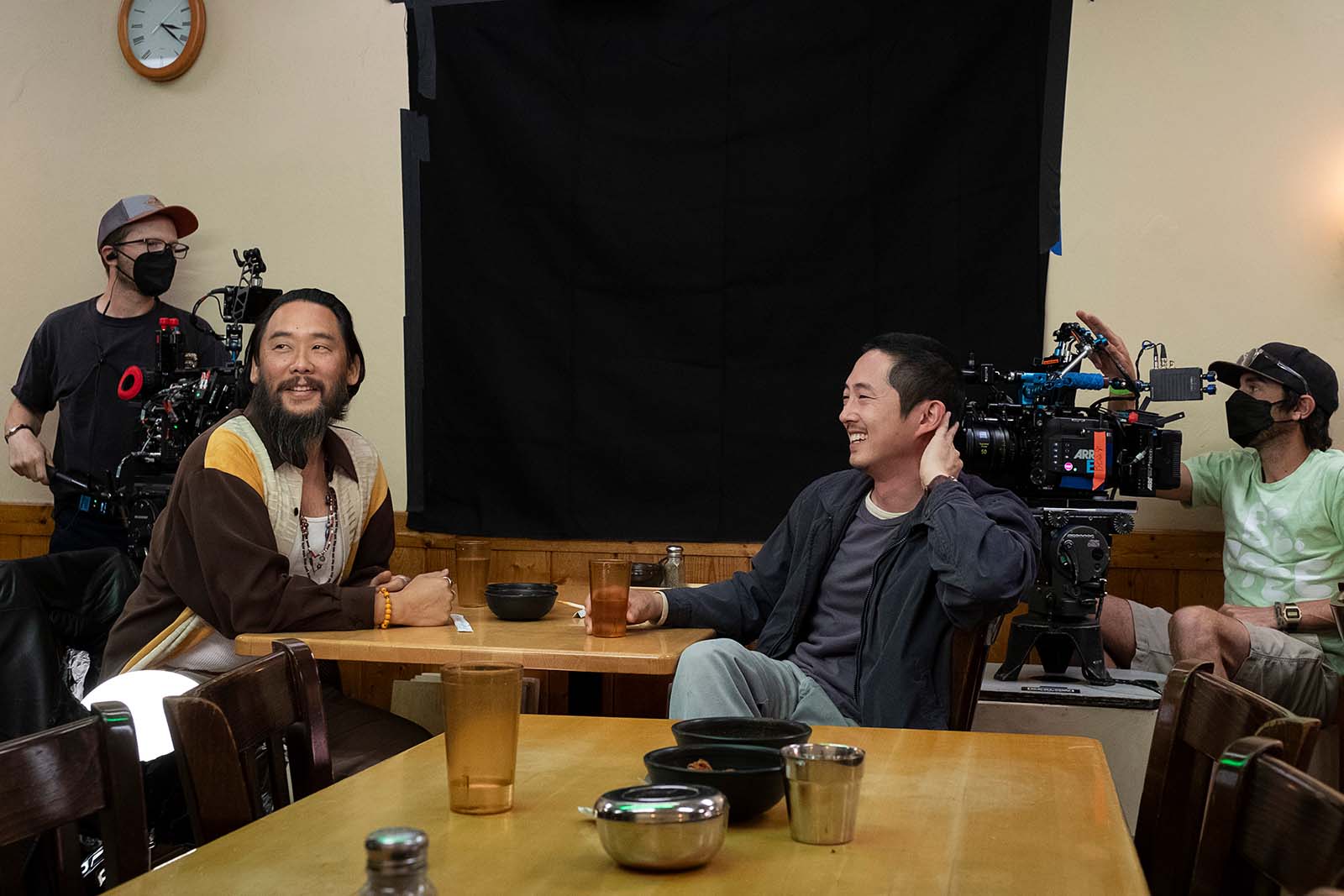
But in terms of picking favorites… I like a show that people can argue about. If people want to say, “I’m team Amy” “I’m team Danny” that’s great. But my hope is, whoever’s side you’re on, you switch as the series goes on.
If you’re engaged and you’re saying, “Ooh, Danny went too far throwing out Paul’s college applications. That’s not cool” later on you’ll be saying, “Ooh, Amy’s having an affair with Paul. That’s not cool!”
Hopefully by then we’ve built enough sympathy where all bets are off. Then we’ll follow these characters anywhere because we understand what is eating at them. That was the heavy lifting that we had to do in the pilot. We had to really lay that groundwork so we can understand the choices they make in the rest of the series.
We had to really lay that groundwork so we can understand the choices they make in the rest of the series.
MF: Do you have a process for managing how much time you’re spending with a character or balancing between the two?
Laura Zempel: I learn something new on every job. One of the reasons I love TV is I get to work with other editors.
I took over episode eight after Jordan Kim had to go on to another job. He color coded his dailies by scene. I thought, “This is brilliant. I should start doing this.” In my timeline, I could see how long each scene was visually, but I wasn’t smart enough to do that on the pilot. I should have, now that I think about it.
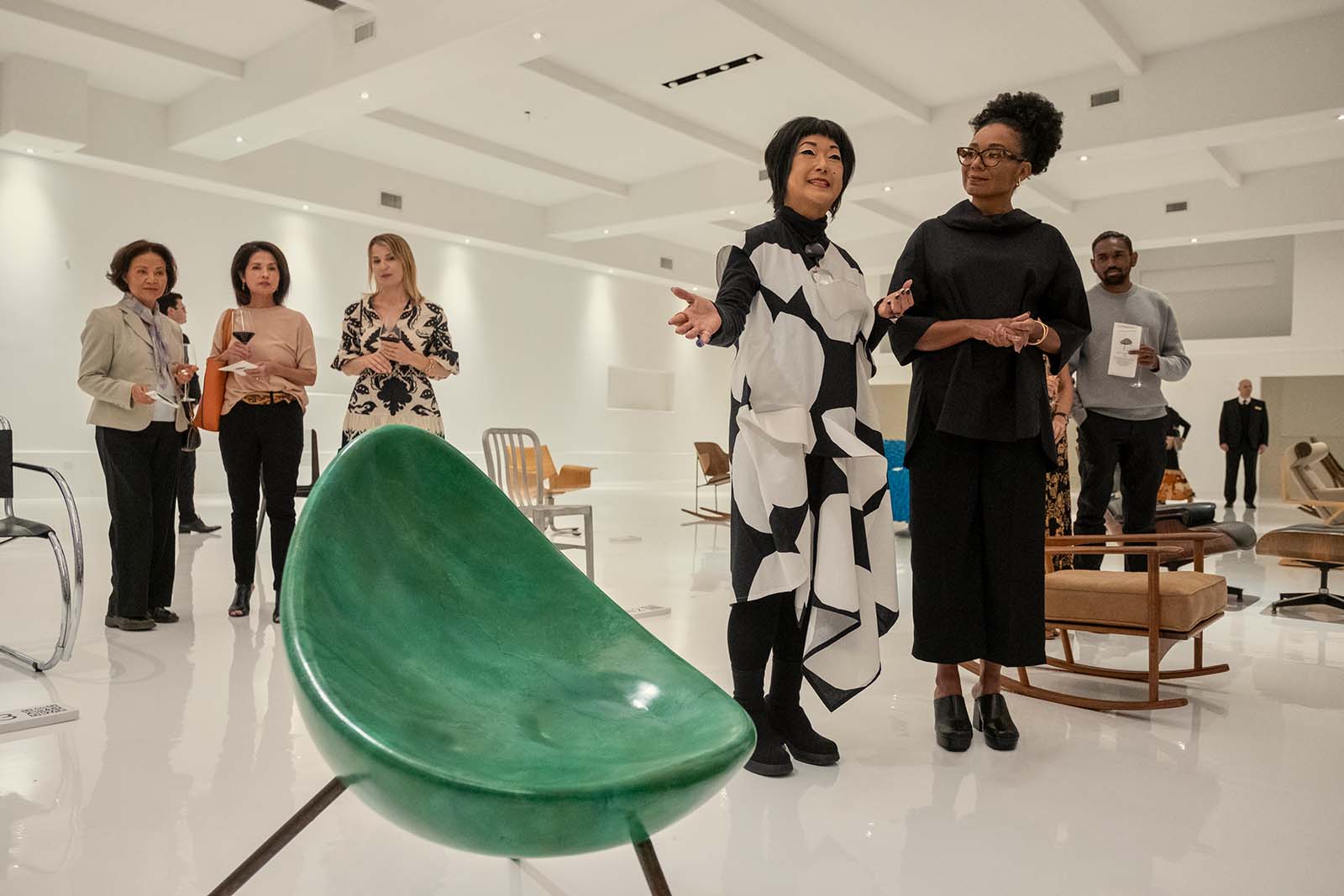
On the pilot, I wrote notecards. I had to write notecards for each character. Danny’s were blue, Amy’s were pink. I would put them down on the ground and move them around and say, “Well, we could go here and then there, but then there are two blue cards next to each other. And here, these are two pink cards.” Something like that was very helpful, especially on an episode that had more heavy lifting, editorially, than some of the other episodes.
MF: Nat, you’re always showing other editors a new trick or technique on a show. Is there anything you brought to Beef from your background on Stranger Things?
Nat Fuller: Bins are one of my favorite little tools when we’re working on a shared project. I remember talking to the other editors and trying to get them on board with that.
With favorite bins we can put the cues that come from our composer Bobby Krlic, the Haxan Cloak. We can put them in one place and then they’re accessible from any of the other projects.
That was something that I pushed for at the beginning, as I do whenever I go onto a new project. That’s how I like to have things done. Like Laura said, we’re always learning and teaching each other new tricks. That was one I brought to the table.
It was fun to talk to Harry and Jordan, who’s really good with his comps. We had a lot of learning opportunities throughout the show. I believe we all came out of this show as better editors.
MF: I skated past this earlier. Is there an assimilation process that happens when editors go from working remotely at home to working together at a post facility?
Nat Fuller: It’s become more manageable as we’ve learned to get accustomed to this work-from-home situation. We remote-in to a place that has all the media, so luckily we’re not having to have drives in our homes. I’ve heard some stories about that. I’m thankful that we didn’t have to do that.
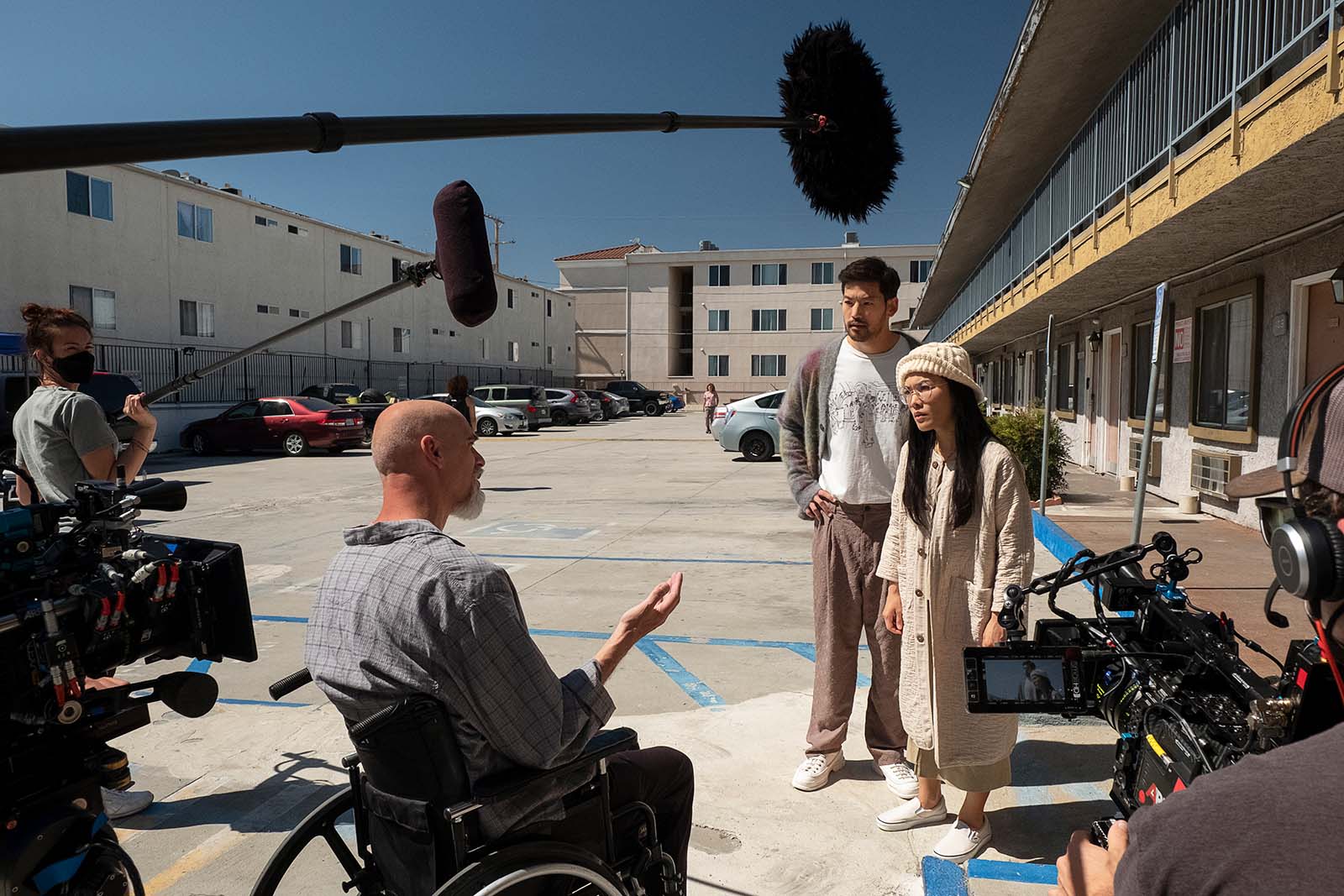
Once we got into the office, the NEXIS that we had been working on lived there, so we were able to get right into it. We had a great post team who was able to manage that for us.
MF: Obviously, you collaborated on the finale. But you also had your own individual episodes and did some amazing work on those. I didn’t want to put all the focus on the finale. The Vegas episode, I thought, was pretty intense. There’s a lot of action. You have intimate moments in the hotel room, and then you have some crazy moments in the casino. Give me your reflections on that episode, what you enjoyed about it and any challenges you faced.
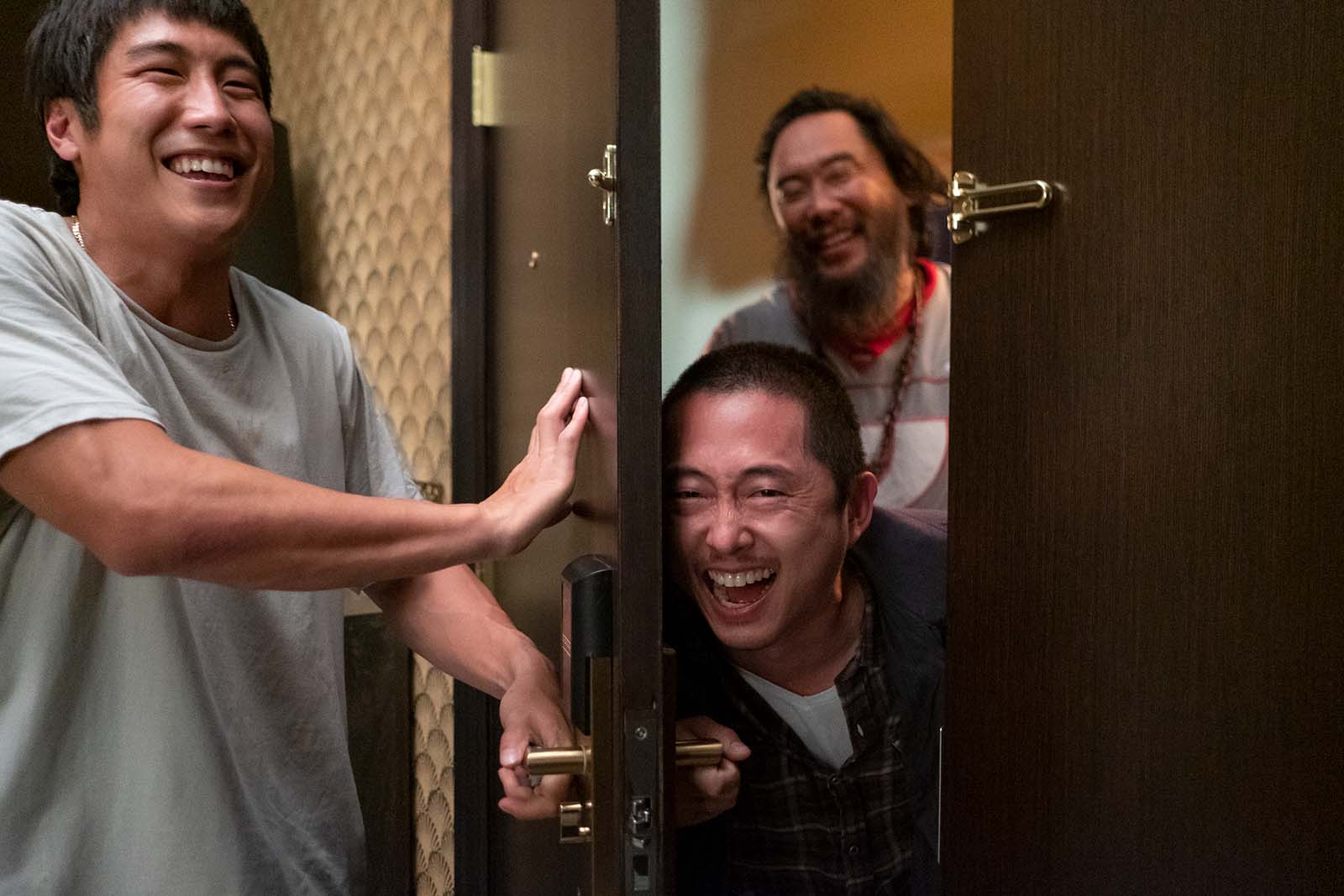
Laura Zempel: I love that episode. I’m so glad that’s the one you brought up. That one is one of my favorites.
There’s so many scenes in that episode that I absolutely love. My favorite is probably the one with Paul and Amy together, when they’re at the end of the bed and she finally has someone who’s listening to her.
Young Mazino, who plays Paul, is so sweet. He brings this innocence that really draws you in. And I love Ali Wong’s performance and just watching her listen, because that’s the first time that the road rage takes on something else.
When Paul is talking about Danny, it’s the first time that Danny becomes a person to Amy. Paul is saying things like, “He’s so tired. He does everything for everyone else.” It’s the moment the light bulb goes off in her head. She’s thinking, “Oh, this guy is kind of like me. I do that too.”
I love that scene. I think it’s one of the hearts of the show. Paul is a link between these two characters, Danny and Amy. That was so fun. It was so tender and intimate, especially in a show that’s so wild.
Then, Amy on stage is just so much fun. We all know there’s magic when Amy and Danny are in scenes together. The big moment where he crashes her conference and the chase through the hotel room was so much fun to cut.

You can tell that Steven is having the best time running through the hotel, laughing, and then the arrest. The Offspring needle drop with her little wagging finger is so ridiculous and so fun.
It’s such a fun, contained episode. It’s almost a bottle episode, because everybody is in the same place at the same time. I love the scene with David and Steven in the car when they’re driving to Vegas. Steven finds out that he was the butt of the joke his whole life, and the chase up the stairs…
That episode is totally insane. There’s so much going on and it was such a fun challenge. Everyone got to be so goofy and so tender. I think that episode really exemplifies my favorite parts of the show.
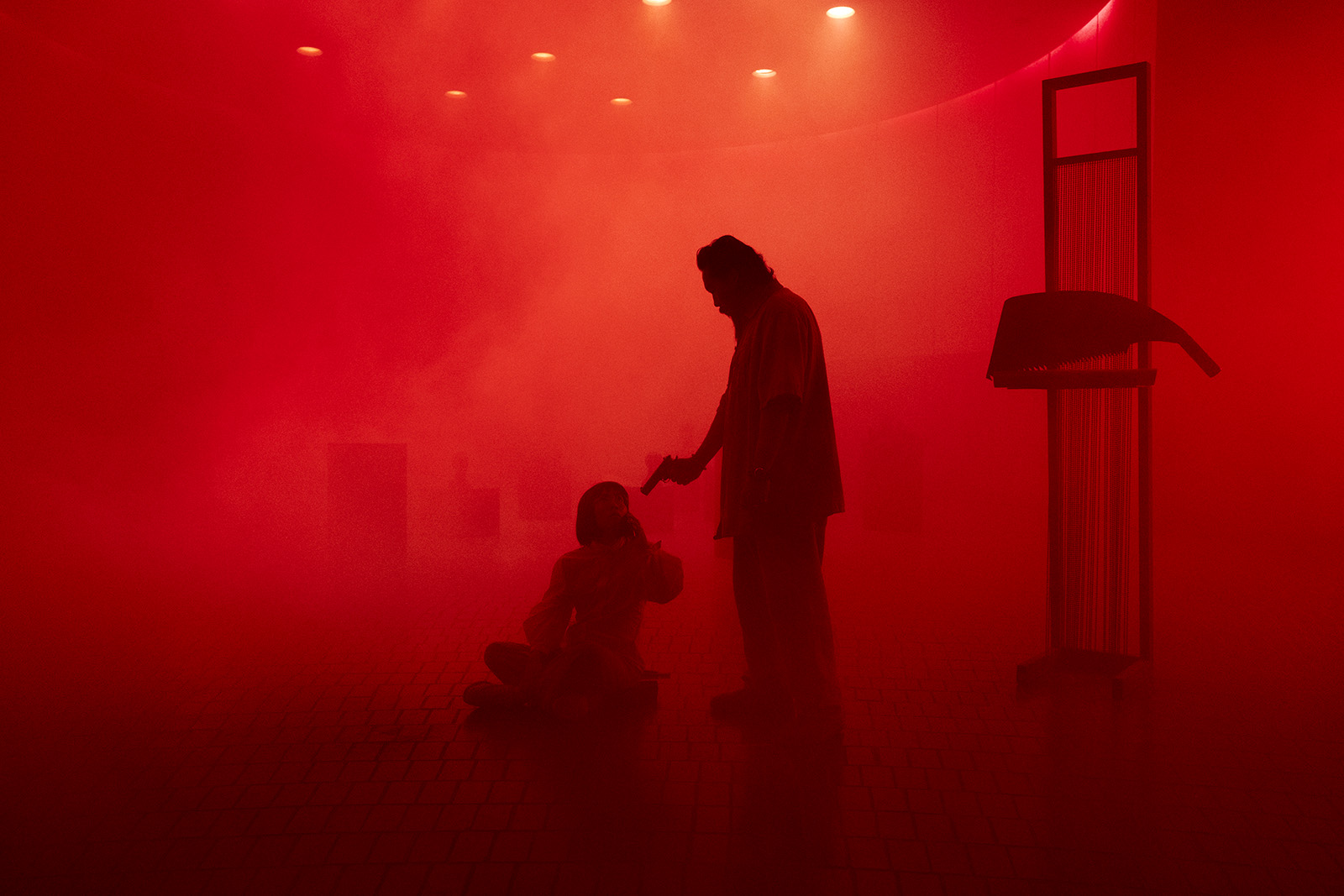
MF: Nat, for you, episode nine is where things just got really insane. There’s a lot of action. There’s also very tender moments amidst that action, such as when Danny tells Paul, “I held you back. I threw away your college applications.” I thought you did an amazing job in that episode.
Just like with Laura, I want to hear about your experience cutting that episode. What did you put into it, what did you take away?
Nat Fuller: Thank you for all that. Episode nine was definitely one that I was always very excited to work on. I thought of that episode in the Coen-brothers style, where things fall apart and everything starts to really hit the fan.
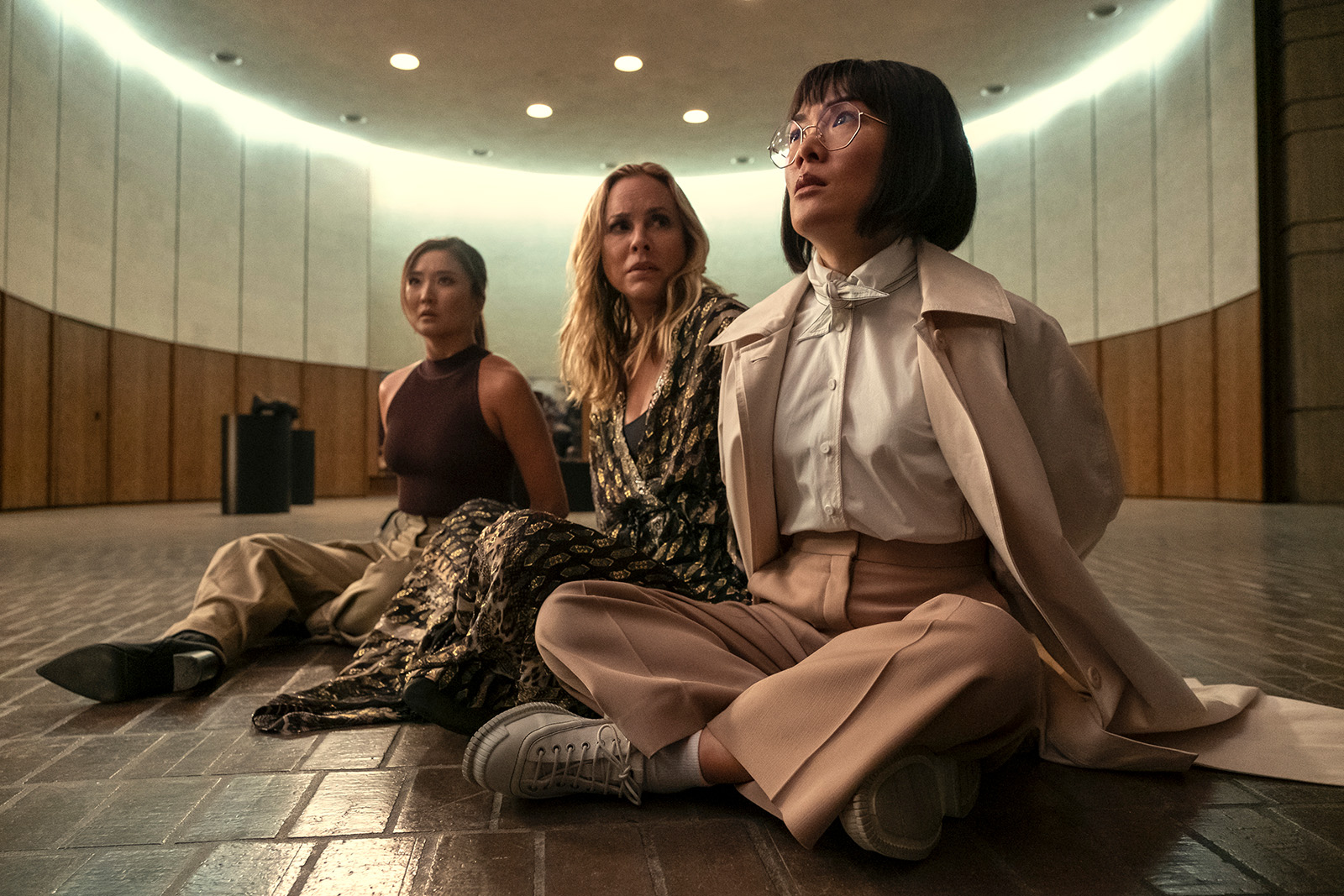
All these decisions that these characters have made come to a head. It all goes wrong in every way it can. Episode nine was really fun, I think, because it departed from the slower-burn stuff that was going on. That episode was more, “Okay, it’s go time. Things are getting pretty heavy duty.”
It was fun to start off with a bang. Danny comes in with June (played by Remy Holt). Jake Schreier shot it with a lot of energy. I thought that Steven’s performance when he said, “Hey, man, I’m just going to go to Mexico” was really fun. Then we get into the house and we have a chase down the hall. We have Jordan’s (played by Maria Bello) demise.
You know, I really beefed up the sound effects. I told my assistant, Ryan Rambach, “Let’s make this sound really gruesome and nasty.”
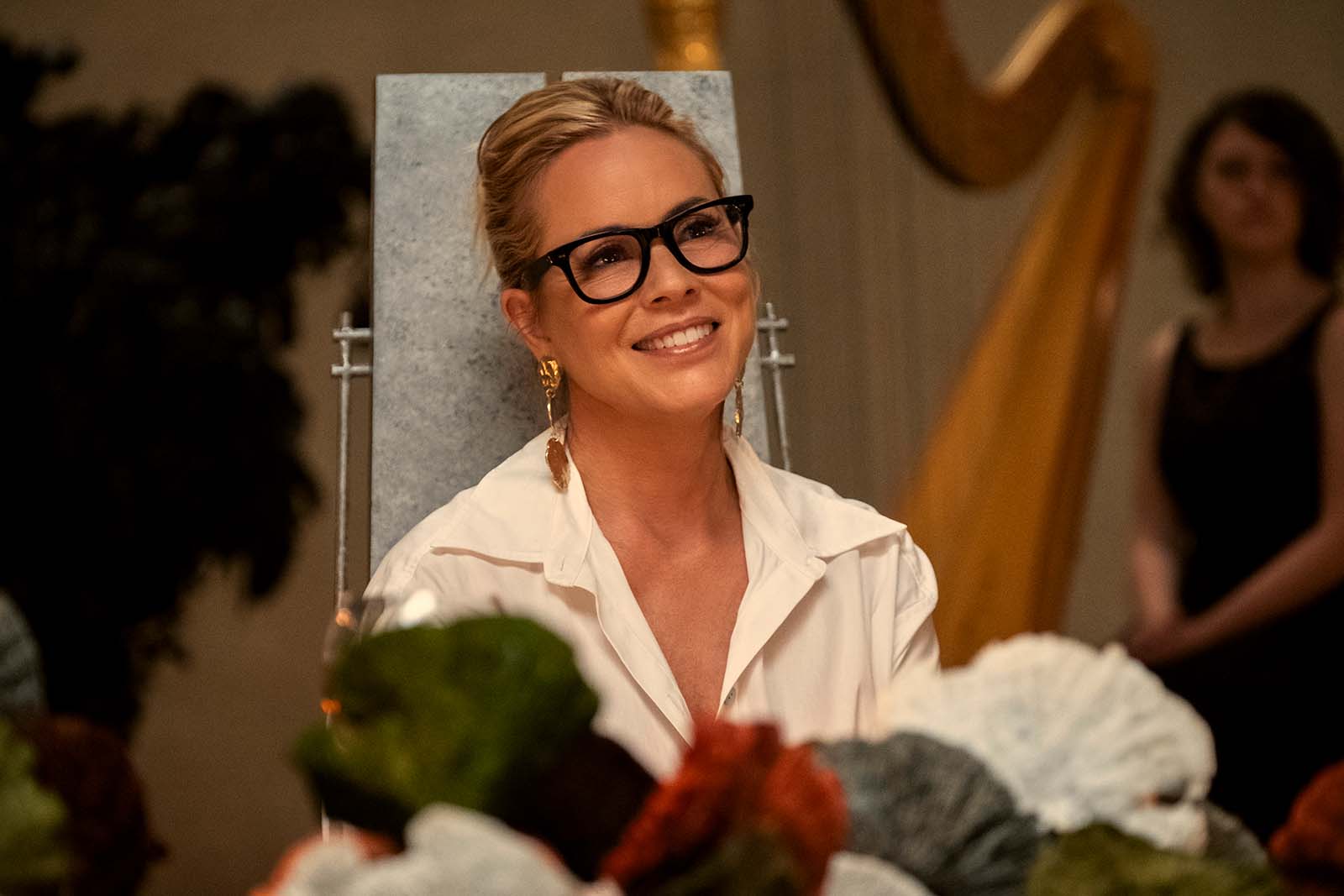
A lot of that was sound design. If you watch that sequence, we hid the visual aspect of it as much as we could. Most of it was based solely on sound design, which was something that I tried to do in my Stranger Things days.
I really enjoyed episode nine, especially how we got to tie things up with Danny and Paul outside, amongst the chaos. They have this very connective moment where Danny acts like, “Hey man, get away from me. I am not good for you. You have to leave.”
When Paul drops his arm, you see that moment of, “You’re supposed to be my brother. You’re supposed to be looking out for me, but you hurt me.” Danny has hurt Paul in a way that is so deep that Paul decides to leave.
Then we get the aftermath, where they’re driving. We have that slow-motion car chase, which was something I’ve never done before. And it’s set to Bjork. All of it was just unique storytelling from Sunny and Jake. I was really happy to be able to put it together for them.
MF: All of that great work leads up to episode ten, the finale, where it’s finally down to just these two people. It’s just them injured in the desert, needing one another to survive, and yet they hate each other. They each wish the other one would die.
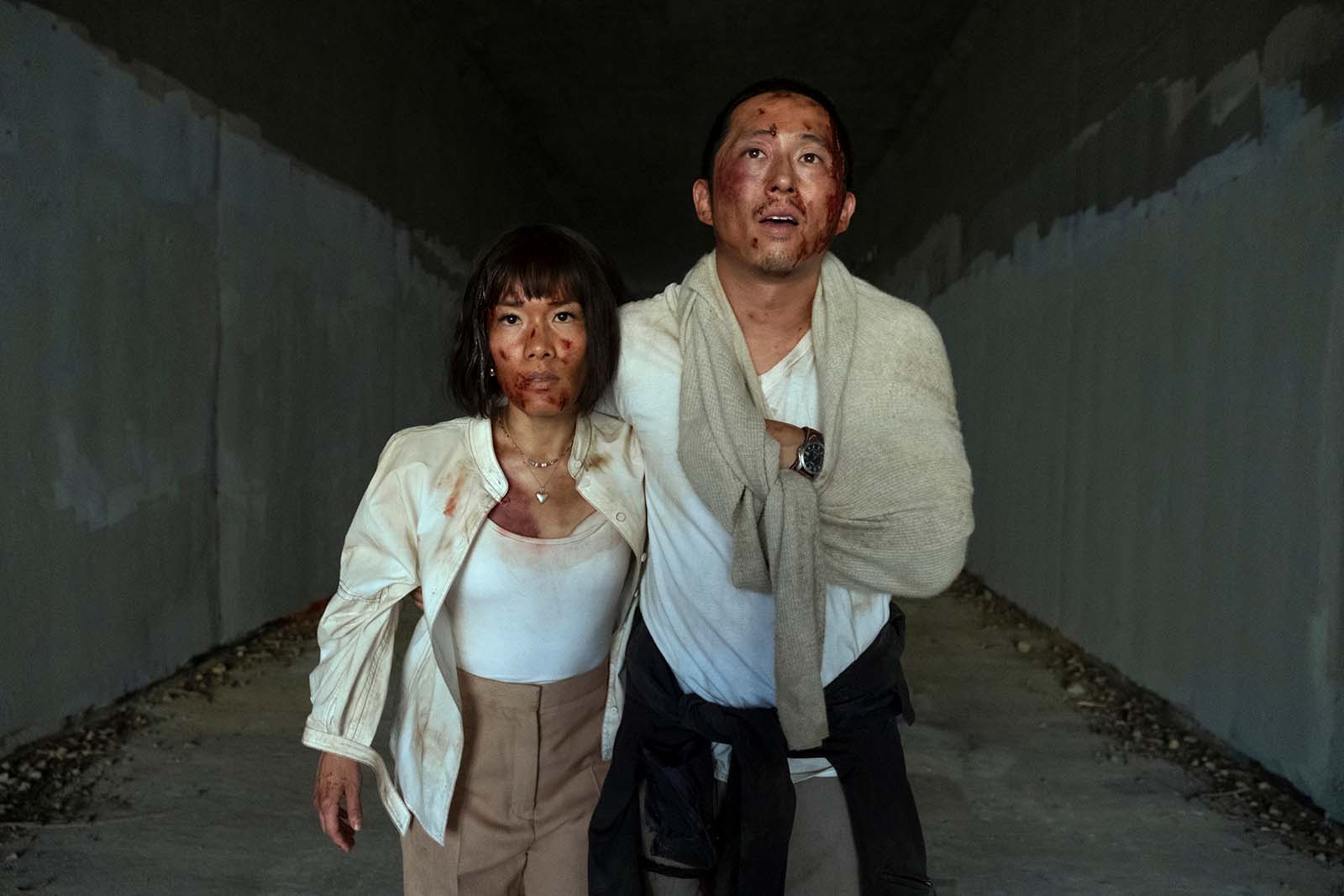
Laura, you already said the episode starts off with two crows talking to each other through subtitles, which is a pretty wacky departure. That’s something where you think, “Wait a minute, is this still Beef?” Let’s start with that. The crows. Did you ever even question that?
Laura Zempel: Is this right? Yeah… Um. I was definitely thinking, “What the hell is this show?”
You read episode nine, and even then you think, “Okay, I guess we’re going for this. It’s become an action movie.” Then episode ten starts with two crows. As a reader, I was going through the scripts just thinking, “I don’t know what’s going to happen.” Hopefully the audience feels that way, too.
As a reader, I was going through the scripts just thinking, “I don’t know what’s going to happen.
Hopefully we’ve made the ride smooth enough that we could do anything. With the two crows talking to each other… There are definitely surreal elements throughout the show that were very consciously placed. There’s George and his vases, and we have these ethereal things sprinkled throughout the show, which is laying breadcrumbs for episode ten.
Having the two crows talk to each other was so fun. It’s bizarre to think that Amy and Danny have had these people following them their whole lives, and now they can come together and talk about all the horrible things they’ve done like, “She pointed a gun at me” and whatnot.
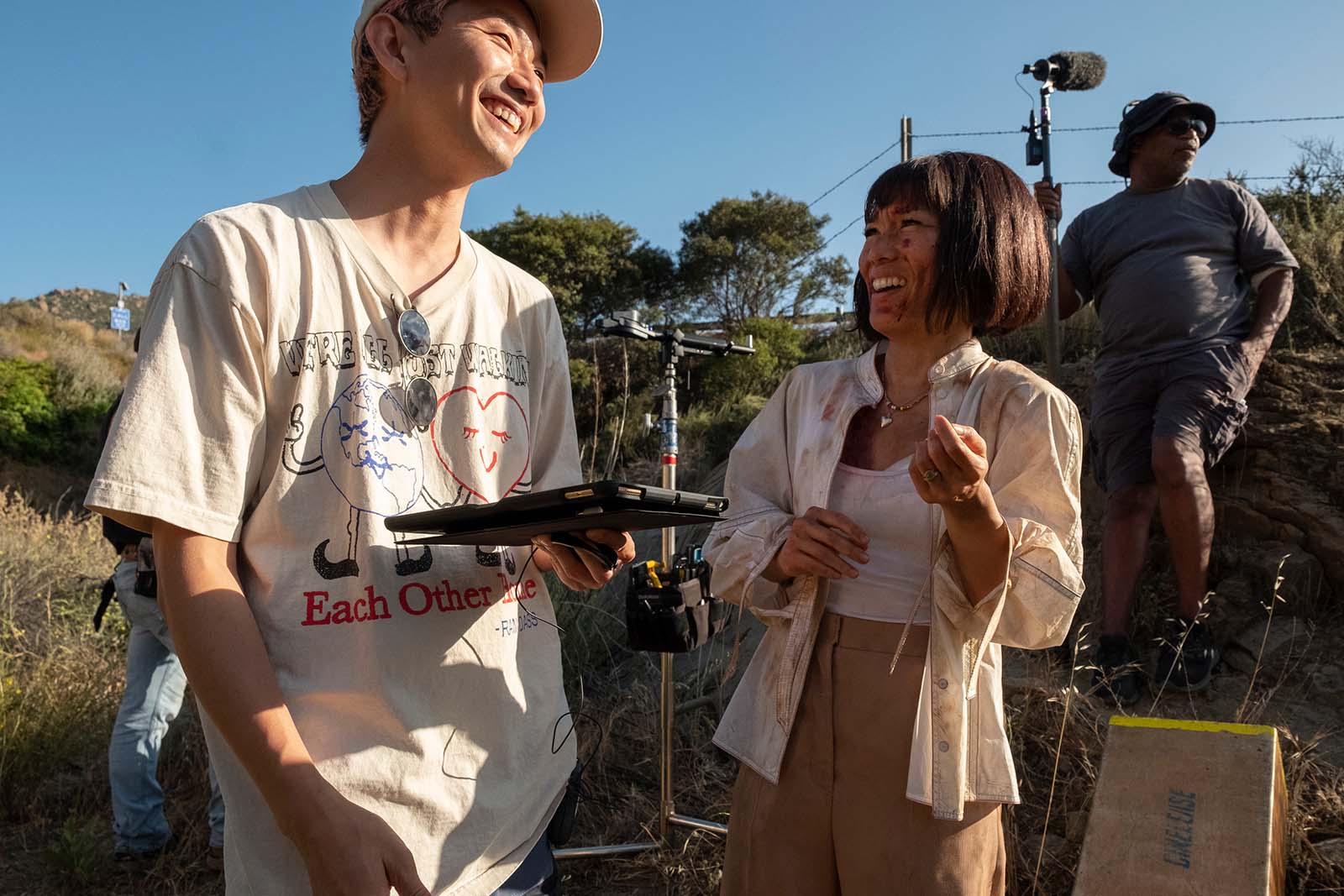
It’s so odd, but it was also really exciting. It freed us up to do whatever we wanted in that episode. That was very exciting.
The crows are named Shadow and Edgar. They’re real crows. They’re not VFX. We have a lot of dailies of crows. It took a long time to put together, but they’re very good actors. We were in-office with everyone when I put that scene together. I remember I put that sequence together and shouted down the hall, “Hey, you guys want to see the crows?”
Everyone came in and I played it. It was really fun. I’m very fond of that opening sequence for that reason. It weirdly felt like the whole season was building towards it without knowing it.
Nat Fuller: The crows were very fun. The original crow dialogue was much more verbose. Then we got a note that was something like, “Can we make this a little more crow-like?”
Sunny and I were sitting in the room and we were thinking like crows. “What are they going to say here?” Then we came up with, “Did he release poo-poo?” because he got scared by Amy pointing the gun. And he says, “Yes, he did release.”
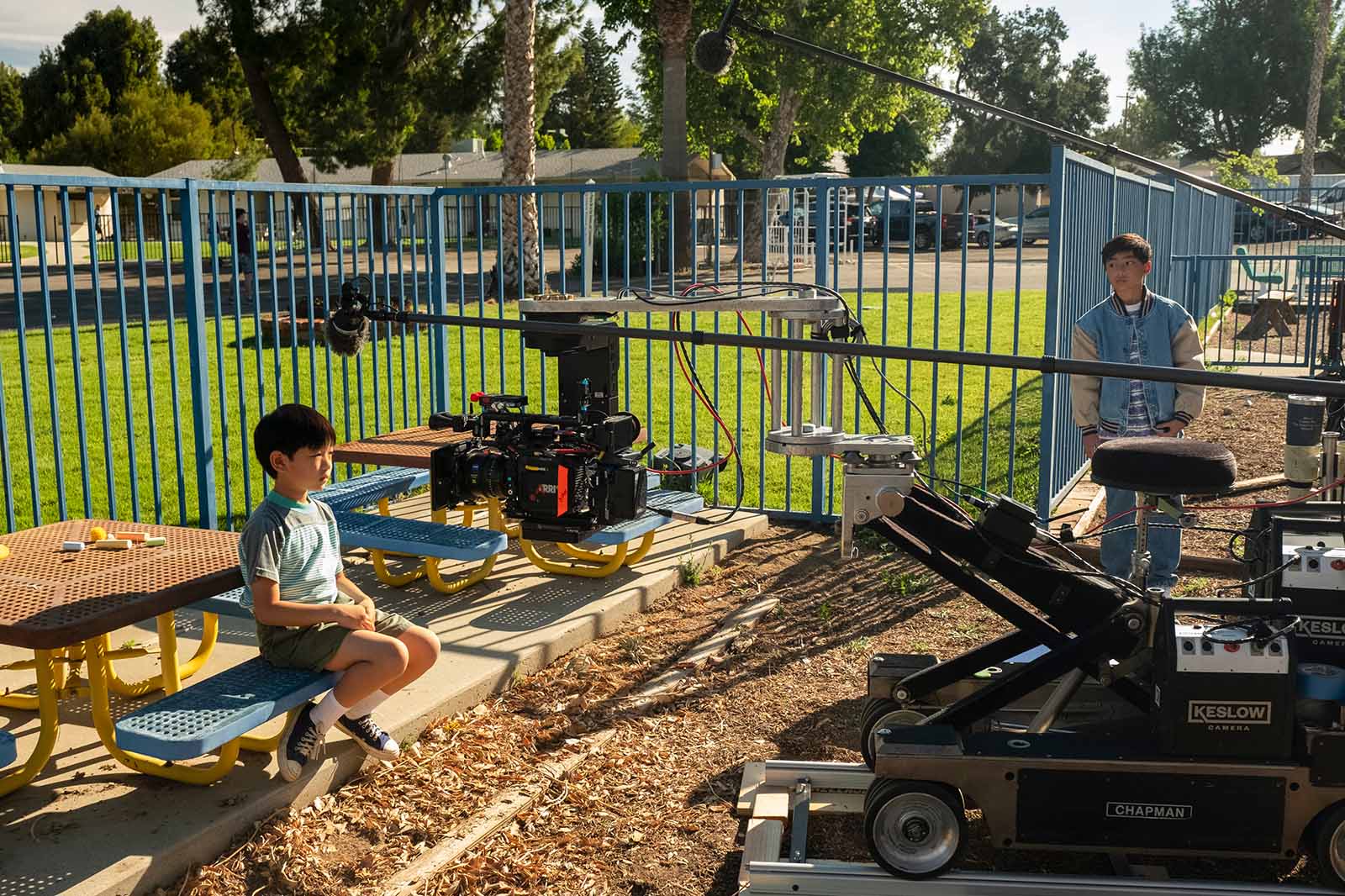
There were little fun moments where we got to say whatever we wanted in those subtitles, because they were crows. I remember thinking like a crow with Sunny, wondering, “How would they speak? How would they tell each other what they’re thinking?”
MF: So the note was, the crows seem over educated. I got it. On that note, I read that Sunny was working on the finale pretty late in the process. That does seem to tie in to what you’re talking about, with the way the scripts were rolled out.
How much change did this episode go through? It feels like there was some flux there towards the end.
Laura Zempel: It actually went through quite a few changes. All the scenes were written, I think, in a different order. The opening was the same and so was everything up until they ate the berries. Then the drug trip starts.
Once that happened, it became a question of, “Who is feeling the sickness?” It became a question of tracking the sickness. We knew there was a micro-timeline within that episode where they start to hallucinate and then they’re near death. That’s where we have the push-in of them on the ground, where they’re saying goodbye to each other.
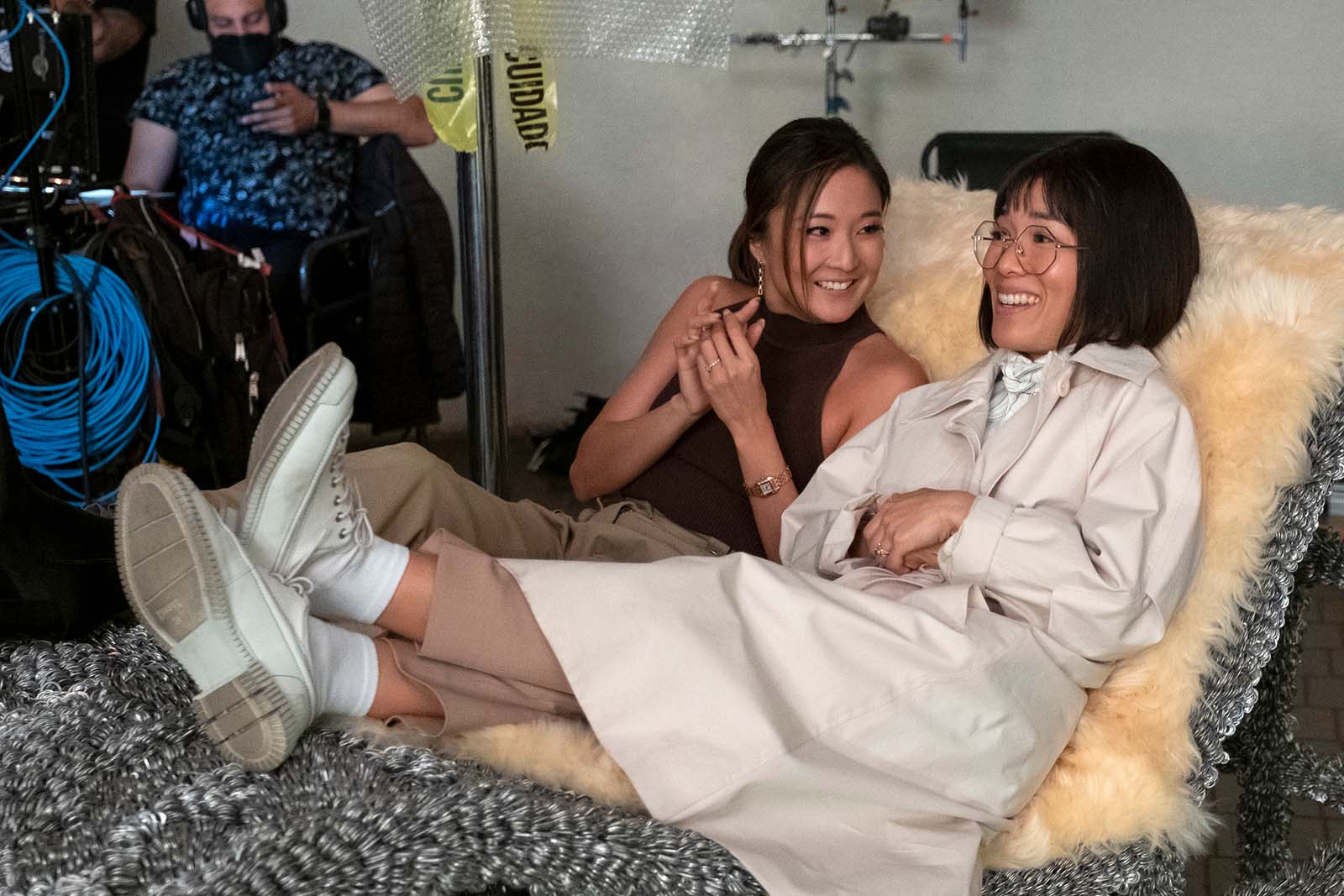
We knew where we were starting and where we had to go. We had to track how intoxicated they were, because some of those scenes are really tender. I love the one where their backs are to each other and they start talking about Paul. Danny says, “I should have been there for him.”
I think that scene started out earlier in the script. Episode ten went through so many changes, I can’t remember exactly. But at that point we said, “They’re not high right now. This is really tender and I want them to feel as if they’re sober and in their right mind.”
Ali and Steven’s performances were so rich. The scene didn’t make sense where it was before. We did a lot of calibrating between those scenes, having these beautiful vistas that cinematographer Larkin Seiple shot. We were placing shots of nature and sort-of rewriting dialogue underneath those shots to help bridge the gap of, “What are the characters feeling? Who’s tripping? Who’s coming down? Is the trip over, is it building again?”
We were designing a path of how the drugs were affecting them. We did a lot of that in editorial with Sunny. It was his first time directing an episode and he was willing to try things.
It was wonderful having someone who knew this was his brainchild and his finale. We spent a lot of time going through it all, making sure everything felt authentic. We made sure that we got to that emotional moment where they’re laying on the ground, staring at each other and speaking as each other.
That’s the other thing we had to do, the body swap. Nat did a lot of work to get the audience into that space, with the voices and how the sound mix was happening, and how the visuals started breathing. The drug trip was a huge part of that episode. It had to be very carefully considered in editorial.
MF: That drug trip opens the door for you to get a little creative with sound and visuals. If you wouldn’t mind, just do a little deep dive on the sonic treatments you did in the finale. You do some crazy stuff with transitions as well.
Nat Fuller: We wanted the drug trip to have a very subtle feel. We didn’t want to hit you too hard over the head with, “Oh, they’re tripping.”
We didn’t want to hit you too hard over the head with, ‘Oh, they’re tripping.’
We added a nice visual wave effect and we rotoscoped out the character, so it wasn’t affecting their faces. It was just affecting the background. We would pinpoint it so we could say, “We want this little bush to wiggle more.”
There were a lot of interesting choices that Sunny and I were making regarding how much of that wavy motion was happening. We didn’t want it to be cheesy. We didn’t want it to be like, “Hey, look everybody! They’re tripping! Yay.” They were tripping for sure, but there’s something off-putting and a little bit strange happening.
As far as the dialogue goes, it was scripted that there would be a body switch moment, but ultimately Sunny and I decided, “Let’s just have them record the other character’s lines so we have that flexibility when it comes to mixing.” Then we could pick and choose whose voice is coming through in different readings.
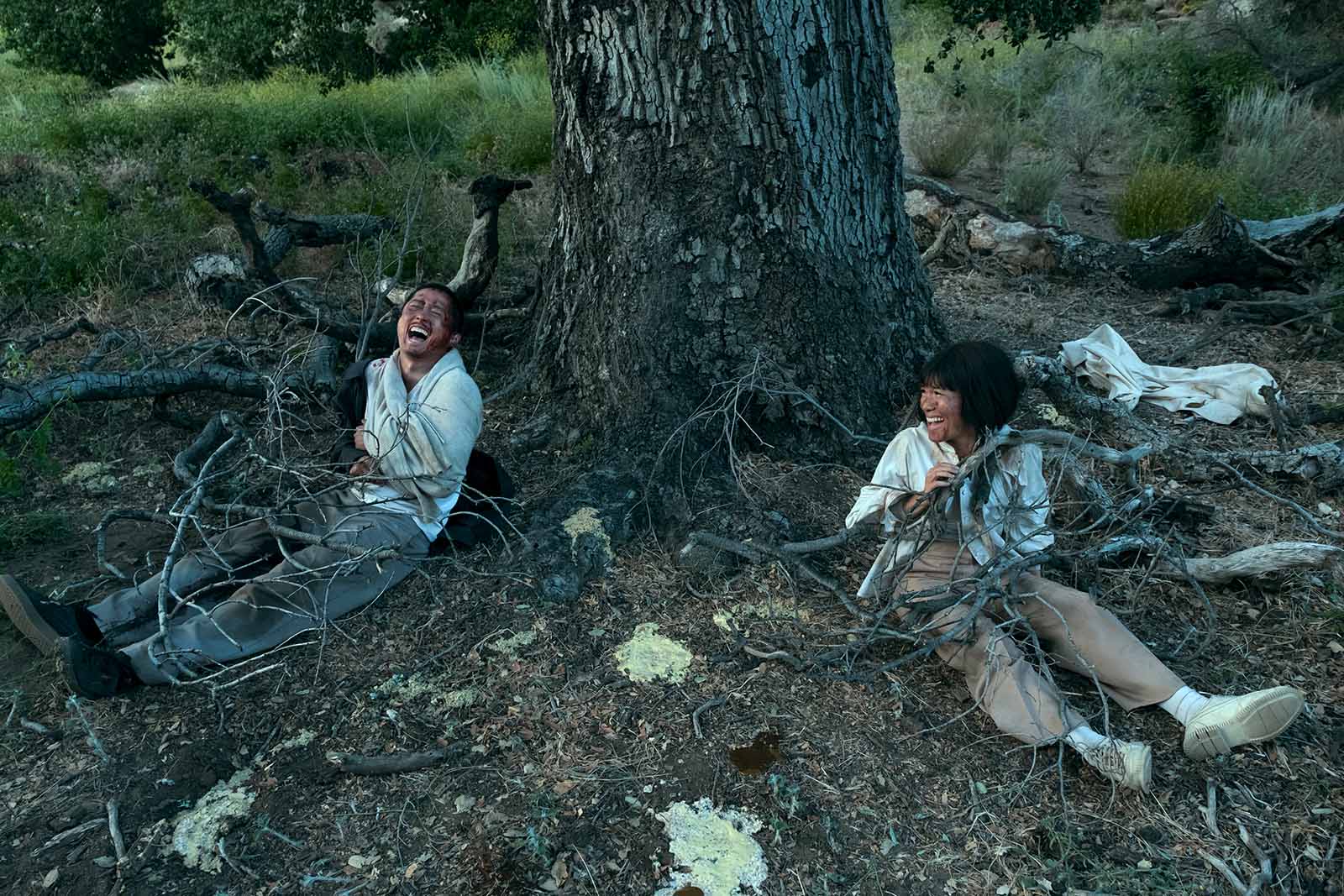
That ultimately covered our bases. Then we could open up all sorts of possibilities. “Is Danny talking? Is Amy talking? Can we blend them in and out?” That was a really good choice on Sunny’s part, to have that option.
Laura could speak more about the big canyon. I love that scene so much. It opens up with a big, giant fart across the canyon. I still don’t know why Sunny chose to do that, but I love that he did. It’s so funny to me. Fart jokes never get old to me. I don’t know why.
MF: I know why, Nat.
Nat Fuller: They’re funny! I love that they’re yelling. There’s so many funny, classic moments. It’s such a good, interesting choice that Sunny made, to have them be so small in frame, just yelling. It was a cool scene. I loved what Laura did there.
We used audio as a tool to tell the story.
We used a lot of different sonic elements in flashbacks throughout episode ten. We used audio as a tool to tell the story.
MF: Laura, you mentioned the push into the ground. You were seeing that shot, or a version of that shot, not knowing what it was in previous episodes. Also, you’re hearing those little quotes play out in the background.
Laura Zempel: I’m really glad you asked about that shot of the ground. That was not scripted in the previous episodes. That was something that Nat and Jake found. I think you guys put that in episode seven.
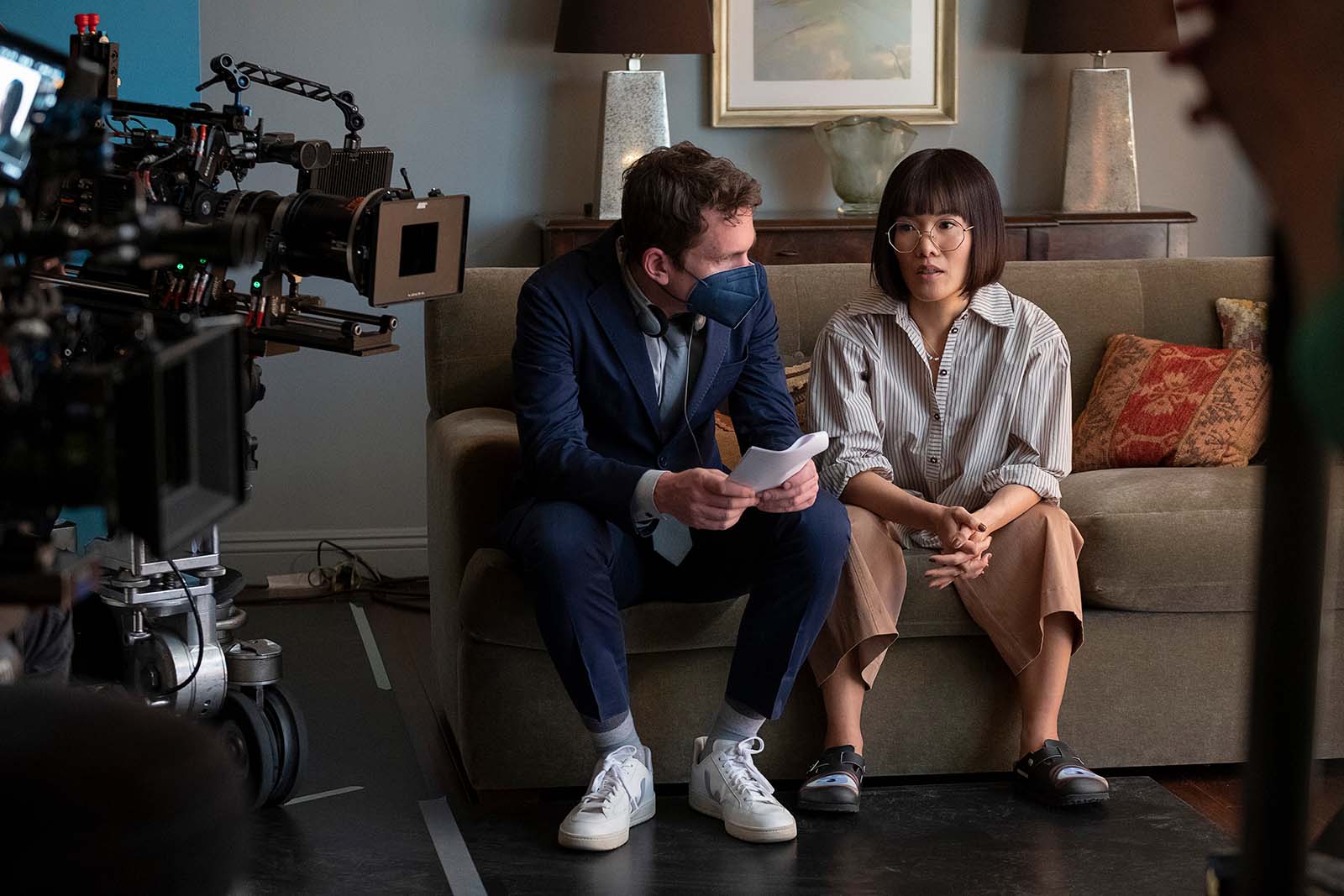
And then we have this void. We call it ‘the void’, the void that is within Amy and Danny. How do you visually represent that? Nat and Jake had this great idea of putting in episode seven. There, we had a push-in on Danny when he’s at the church. Everything looks right, but we have to convey that something is still missing. So they used this abstract shot of the ground.
This was one of the benefits of being in the office, I think. Sunny had been in Nat and Jake’s room. Then he came into mine and said, “Hey, they’re doing this thing. I think that could help us with this one Amy moment that we’re having trouble with.” Then we were able to incorporate it into one of our previous episodes.
That’s the benefit of having a very collaborative in-person team. We’re all in communication, so it helps build cohesion. That way, by the time you get to episode ten, you understand what everything is. I think that shot was really smart and something that everybody came up with in the room.
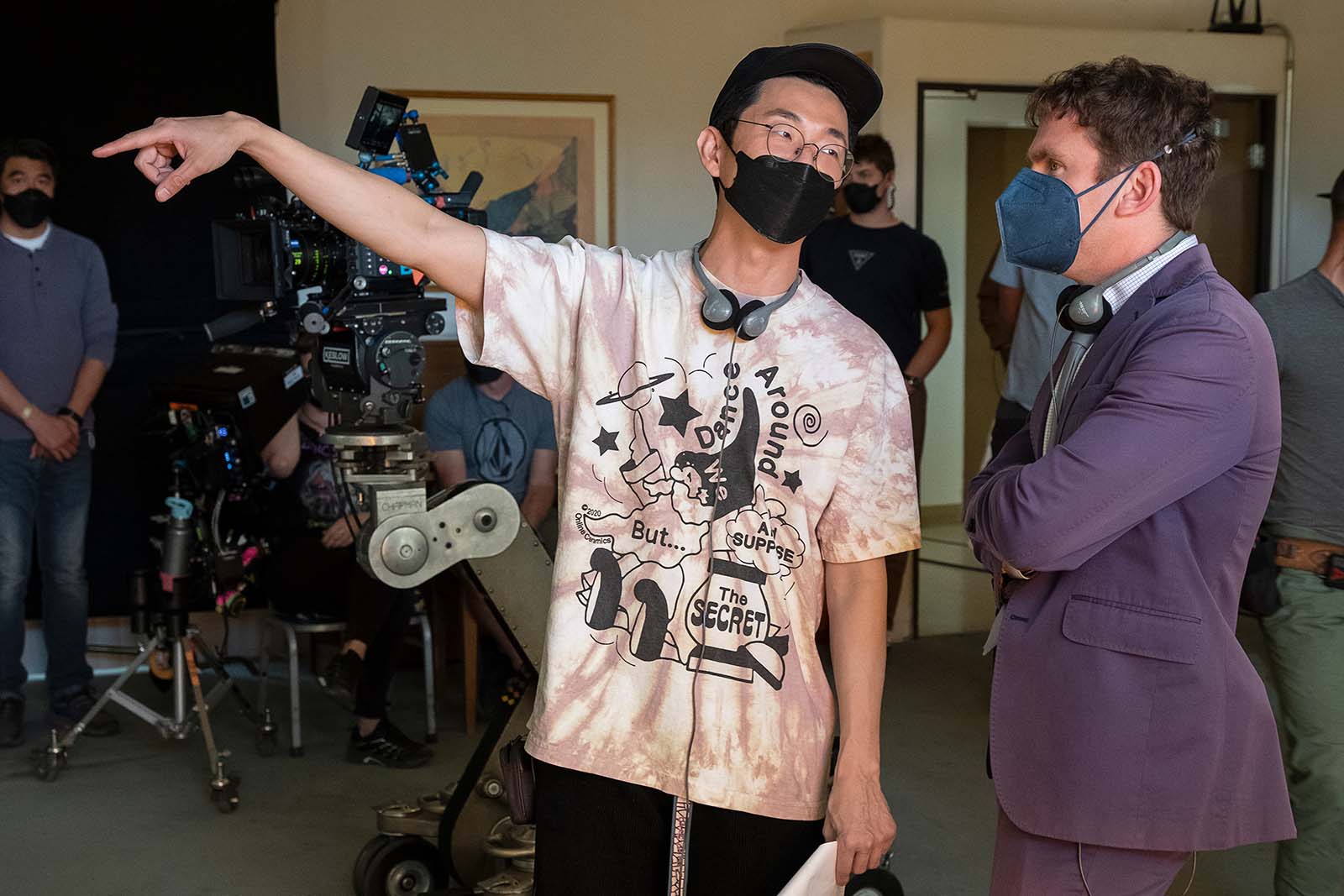
I’m going to let Nat take the sonic question, because he carried the episode through to the end.
Nat Fuller: You hear snippets of conversations. You hear Paul say, “Hey, they never got my college applications.” You hear Danny’s parents talking to him. I think those are audio memories that are coming through in this tripped-out stage. You’re actually getting a little bit more information about Paul saying, “They never got my college applications.”
I think that informs where the characters have gotten to this point. Danny is thinking about the choices he made and how they affected these people.
Those moments were in the desert, which I thought was cool. It added that element of, “You’re out in the desert, tripping, and you’re having these surreal moments.” We added a lot of EQ (Equalization) in there. Then the sound team took it home and did their work on it.
MF: In that final episode, go back to the incident where they bump into each other in the parking lot. But this time you see Amy sit and think before she flips off Danny. You see Danny think a little bit about what’s happening, as opposed to acting quickly.
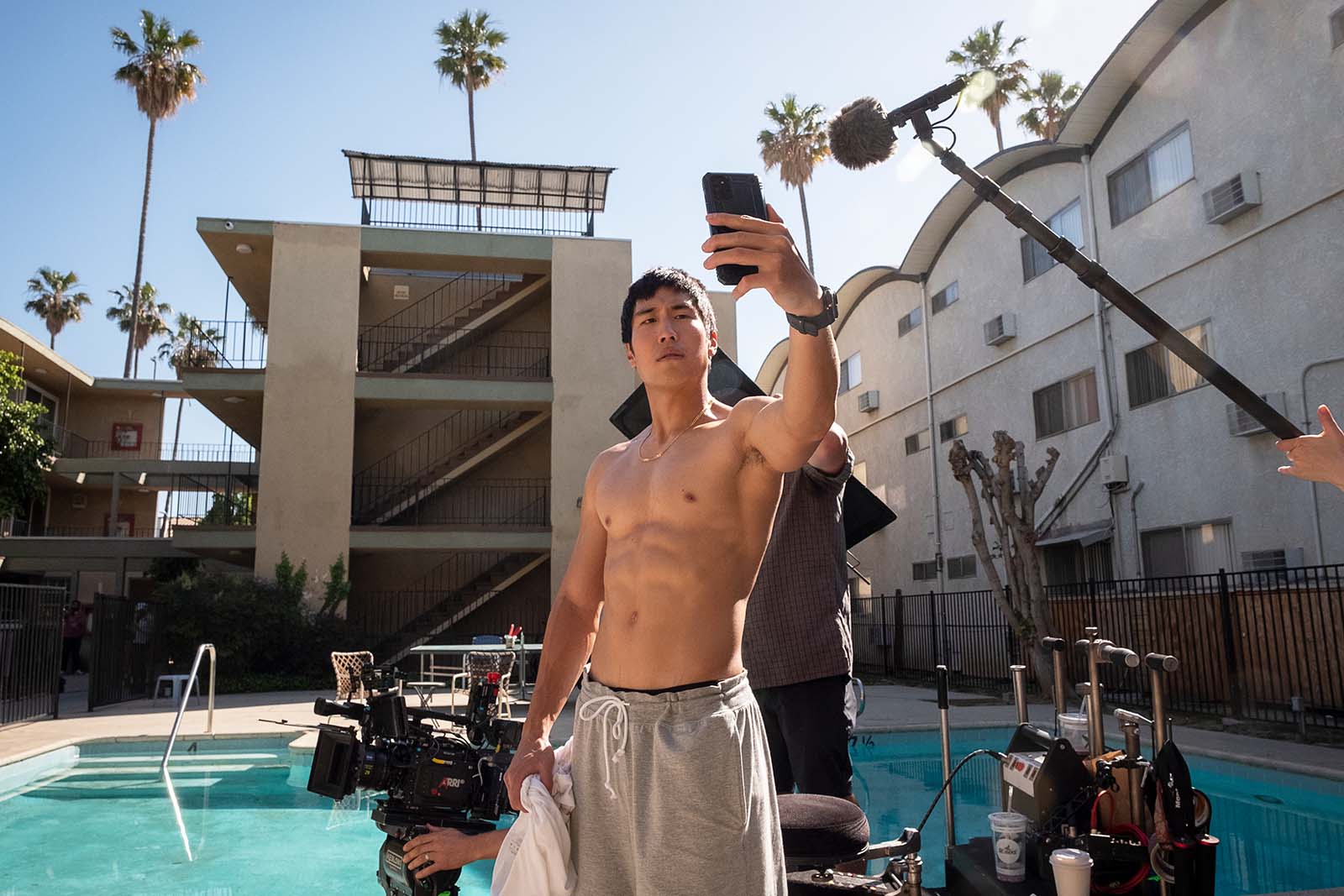
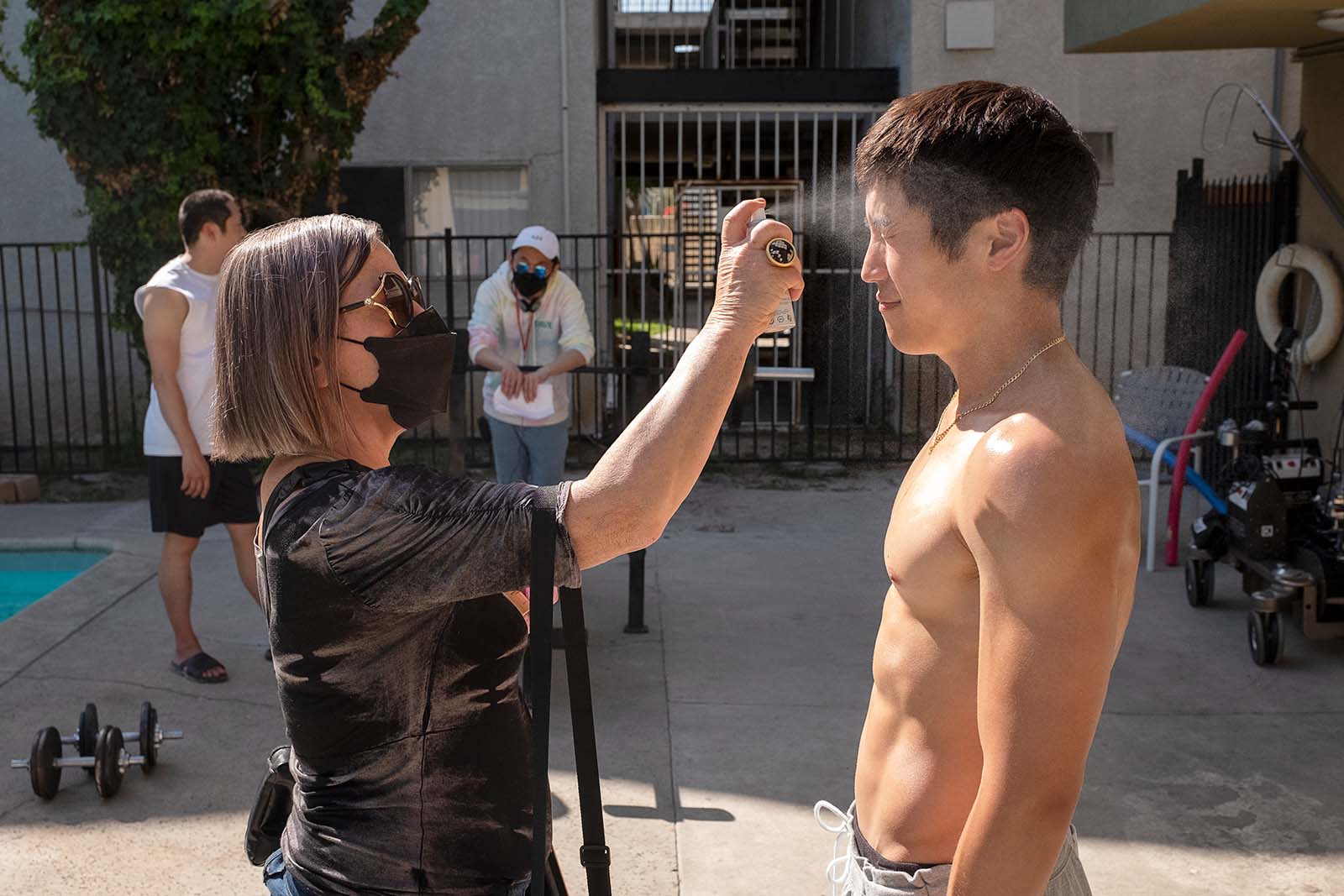
Tell me about going back and doing that part. Was that all shot on the day back then, or did they have to go back and shoot specific scenes of them delivering those performances?
Nat Fuller: That scene in particular wasn’t that way. The scene originally ended with Amy in the hospital, which I thought was great. Then we got a note from Netflix. They wanted a little more to elevate us, to punch out the season.
This was at the very end. You asked how long the writing and shooting went? It went right up to the very end, and it was because of this scene. We were thinking about it, and I said, “You know what? I think I know what they are wanting here. I think they’re wanting a little bit of a recall back to some earlier moments.”
There was a debate with Sunny, because I know we didn’t necessarily want to do a flashback. Was a flashback the type of storytelling that we’re telling in Beef? We tried it anyway. Audio-wise, I took some clips of them hearing the horn come in and then I cut back to that scene of them in the parking lot.
That was constructed, because that was all we had.
We didn’t have the shot of Amy thinking about it before she gave him the finger. That was constructed, because that was all we had. I said, “Let’s just try this and see if it works” and once we saw it in action, we thought, “Actually, that’s kind of cool.”
Then Sunny had the brilliant idea of going back and getting Amy for one more shot. That was it, one more shot. We went out and got it in the last week. We went out on a very small budget.
I wasn’t there, but they shot Amy in the car and got a bunch of different ways that she could be reacting. I thought it was so good that it brought us back to the beginning of the show, and it tied it together nicely. Also, Ali’s performance, when we come out of the flashback, worked very well. We were able to tell that story of the beginning and the end, where we started and where we ended up.
MF: How did you collaborate on that episode? Was there any rhyme or reason to what each of you worked on? Did you work on everything together? How did that play out?
Laura Zempel: Nat and I were in constant communication throughout the show. We were really involved in watching early cuts of each other’s episodes and that sort of thing.
Episode ten ended up falling into my slot because that’s the way the episodes were divided in the schedule. But I had to leave to go to another show, so I knew that Nat was going to be taking over.
We discussed it and he was fine with it. I was very grateful. I knew it would be in really good hands, so I did my best to keep him involved with everything along the way and bring him in.
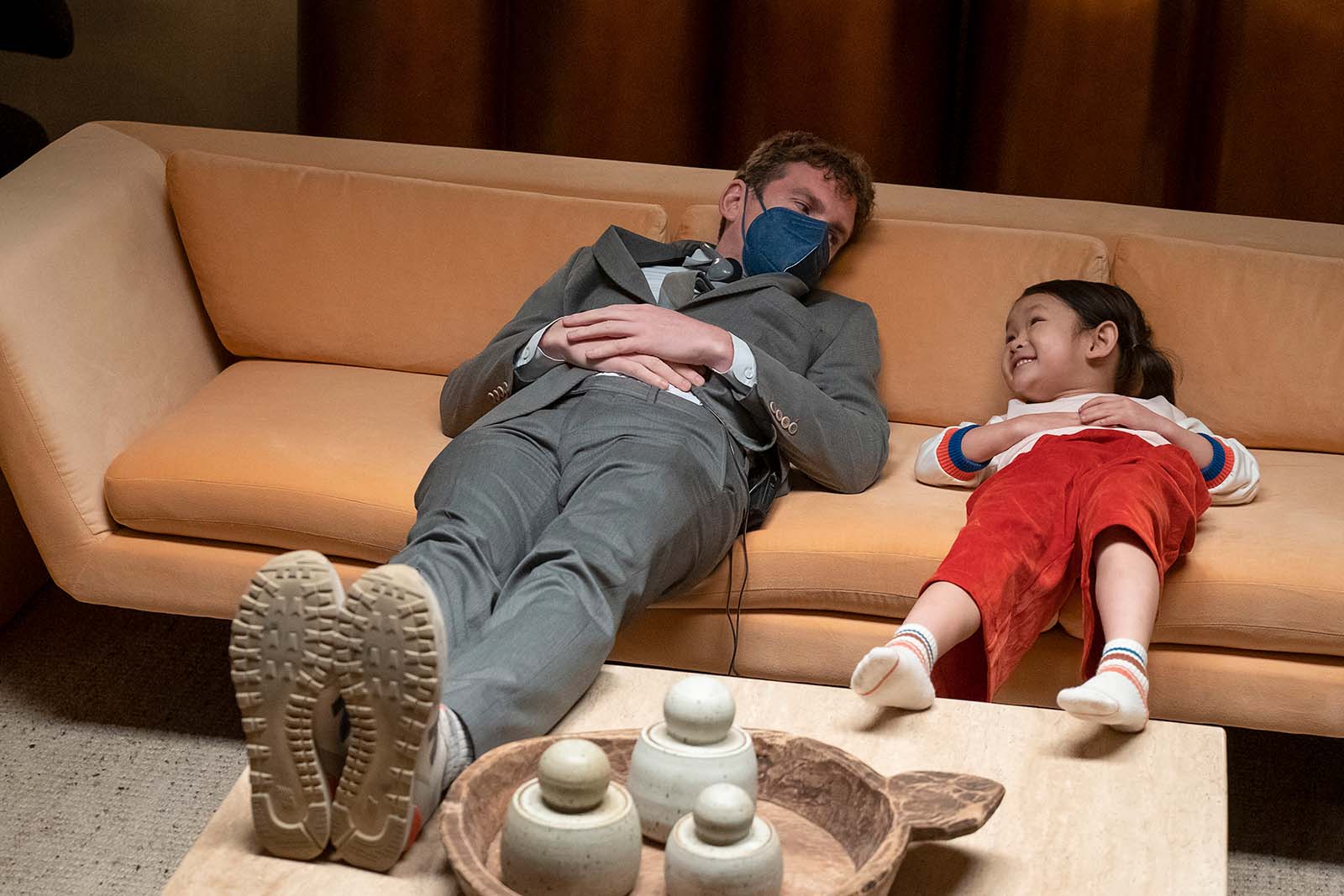
I’m sure you came in on Zooms with Sunny and I. We all pitched ideas, so it felt very collaborative. That was wonderful, because we moved so many things around early on. It was nice to have Nat involved in tracking, “Here’s how we got here, and here’s why these things are happening this way.”
Then Nat took over and elevated it. He did some wonderful things with that final shootout with George (played by Joseph Lee). When I saw it, I said, “You solved a lot of problems that I couldn’t figure out!” I was so grateful to have his eyes and his talents on it.
Nat Fuller: To echo all of that, I think our show had a core group of editors— it was Laura, myself, Jordan Kim and Harry Yoon, and we all collaborated together. Laura was going off to another show, so we all had a shared responsibility of making sure that the show got to the finish line.
I was happy to take over and get episode ten to the finish line. Laura had left it in such a great place. Then Sunny and I did some things with the crow, and some things with George. There was a lot of tweaking and changes that happened after the fact. It was always there, it was just about getting it from that place to what you saw in the final picture.
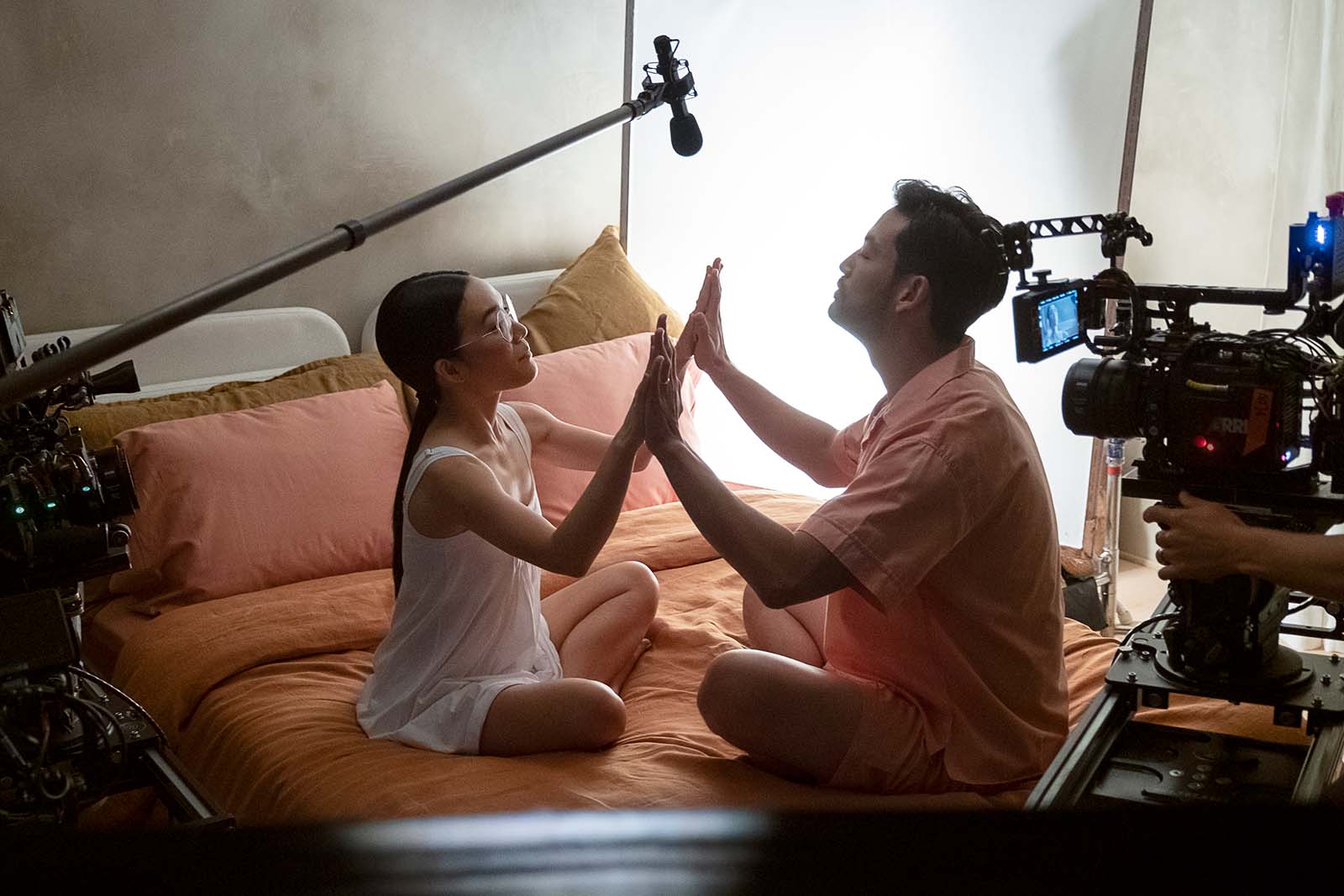
That happened with many of our episodes. In episode five, Jordan and I collaborated heavily. In episode eight, Jordan and Laura collaborated heavily. Episode one was Laura and Harry. It was emblematic of our team effort across all of the editors and our assistants, Ryan Rambach, Lilly Wild, and Josh Stein, and even our PA, who became our post-production coordinator, Leah Henry. Everyone was on board to make this thing as good as it could be.
Working on ten was just part of the process, and I’m glad we all have our name stamped on it.
MF: Before I let you go, and maybe I’m only thinking of this because it’s lunchtime… I think Danny and Amy are stress eaters. When things are not going well, Danny will crush a Whopper. What are the things that you do to relieve tension when you’re stressed in editorial?
Laura Zempel: I go into my assistant’s room and complain, and then I take a walk. Lilly Wild, my assistant, was definitely a therapist. I had my dog in the office a lot, so taking him on walks helped too.
I’m kind of joking, but seriously, taking a walk and getting away from my desk helps. If I’m butting up against a problem that I can’t solve, I’ll get away from my desk for a second. Sometimes I’ll have epiphanies or I’ll come back and see it a little clearer. That’s very important to me.
Having an incredible, supportive staff of talented people is very helpful too.

MF: Well, for all you aspiring editors out there, you not only have to know how to organize bins, you have to be a shrink for the editor too. So keep that in mind.
Nat Fuller: It helps quite a bit.
Laura Zempel: It’s true.
Nat Fuller: I don’t know what you’re talking about. There’s no stress, ever.

